When you first bring home a new African Violet plant, you have to quarantine/isolate it from your other plants. The African Violet plant, may be from a big box store, a reputable vendor store, an online vendor, a friend, round robin, African Violet show or African Violet club. In all these circumstances, always remember to quarantine/isolate your African Violet plant in a separate area/room of your house (away from your current houseplant collection).
Why quarantine/isolate a newly acquired African Violet plant?
- It is absolutely necessary to quarantine/isolate your African Violet plant to avoid contaminating your current collection with pests/bugs/disease (infection).
- It is smart to be preventive beforehand instead of having to deal with your whole African Violet collection being infected.
- First of all, identifying what your African Violet plant has been infected with can take a toll on you and your plant.
- Second, finding a correct treatment option is also time consuming. Instead prevention is better than treatment.
- Finally, prevention is much simpler and doesn’t take as many steps, whereas a treatment may involve introducing toxic chemicals to your family and pets.
- Once an infection occurs in one African Violet plant, it doesnt take long at all for it to spread throughout your entire houseplant collection.
- Of course, that may not always be the case that the new African Violet plant you brought home is infected, but its better to err on the side of caution.
- Please remember to make a habit of quarantining/isolating every single African Violet plant you acquire from outside sources.
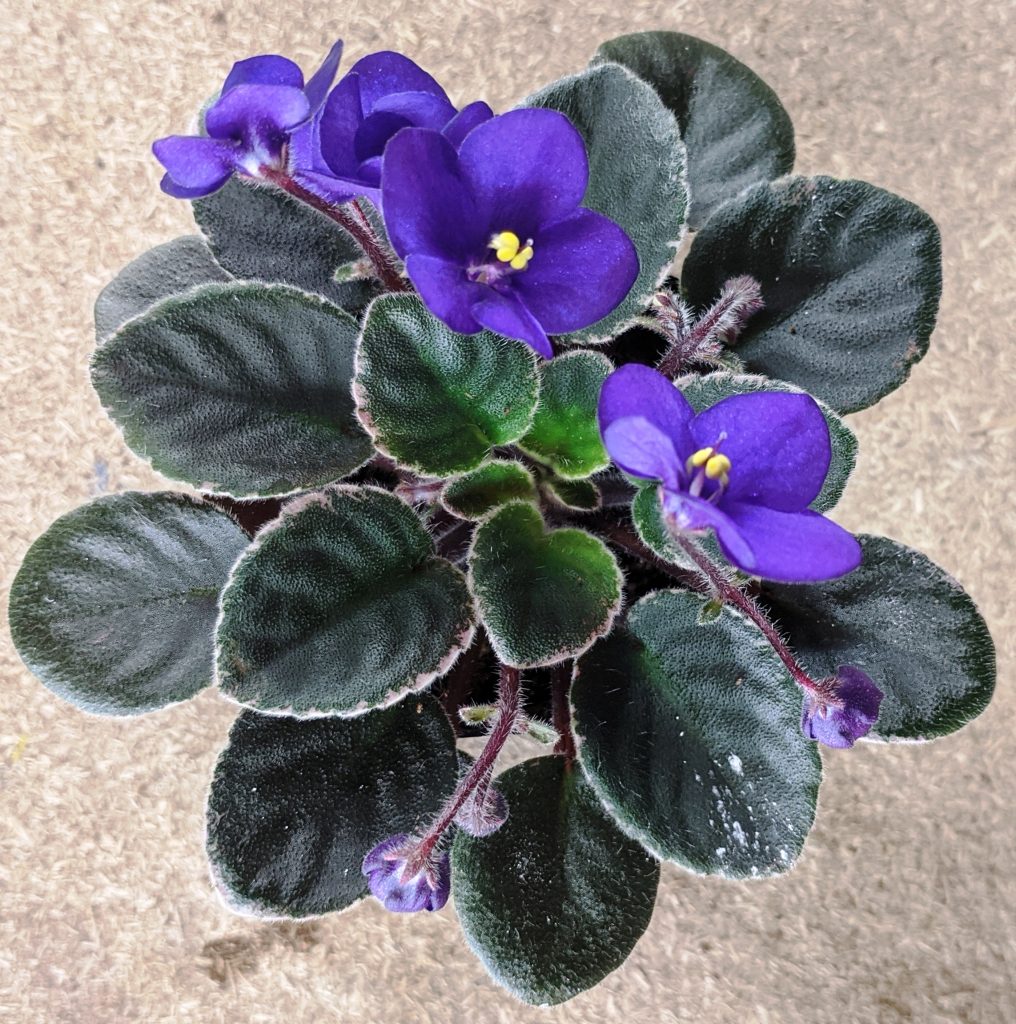
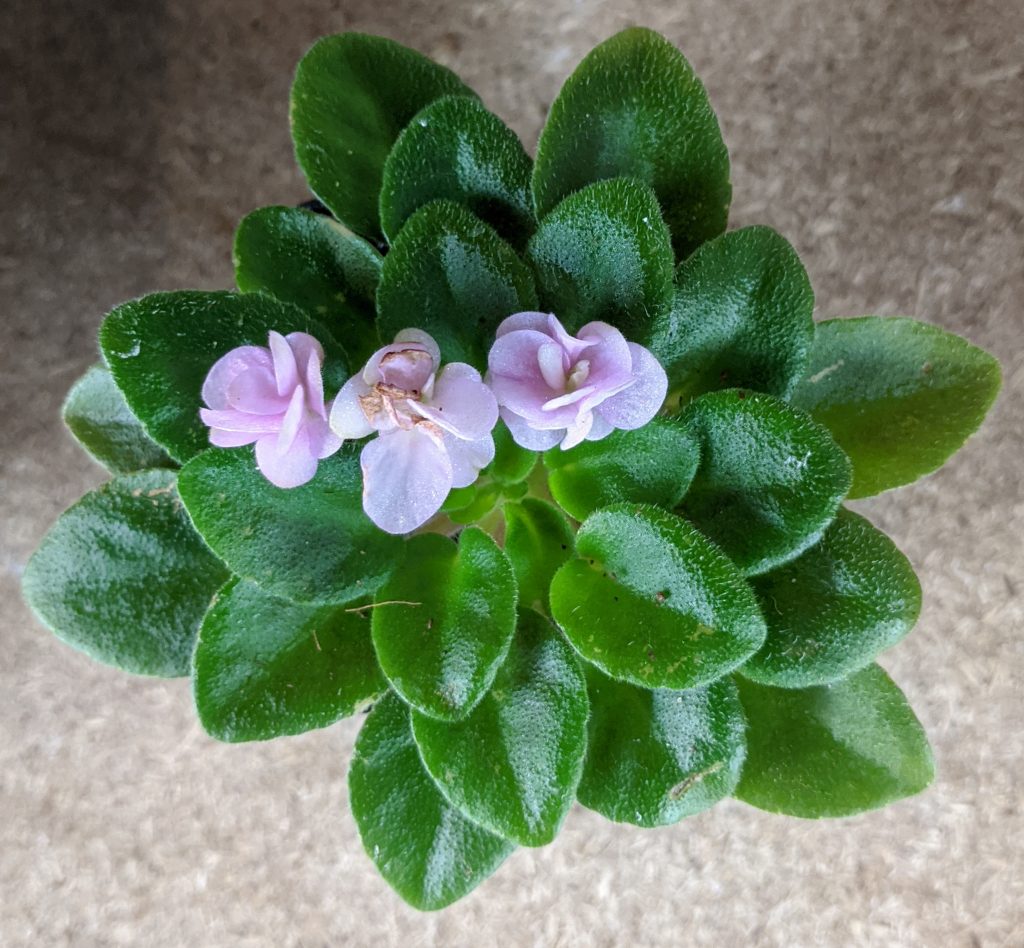
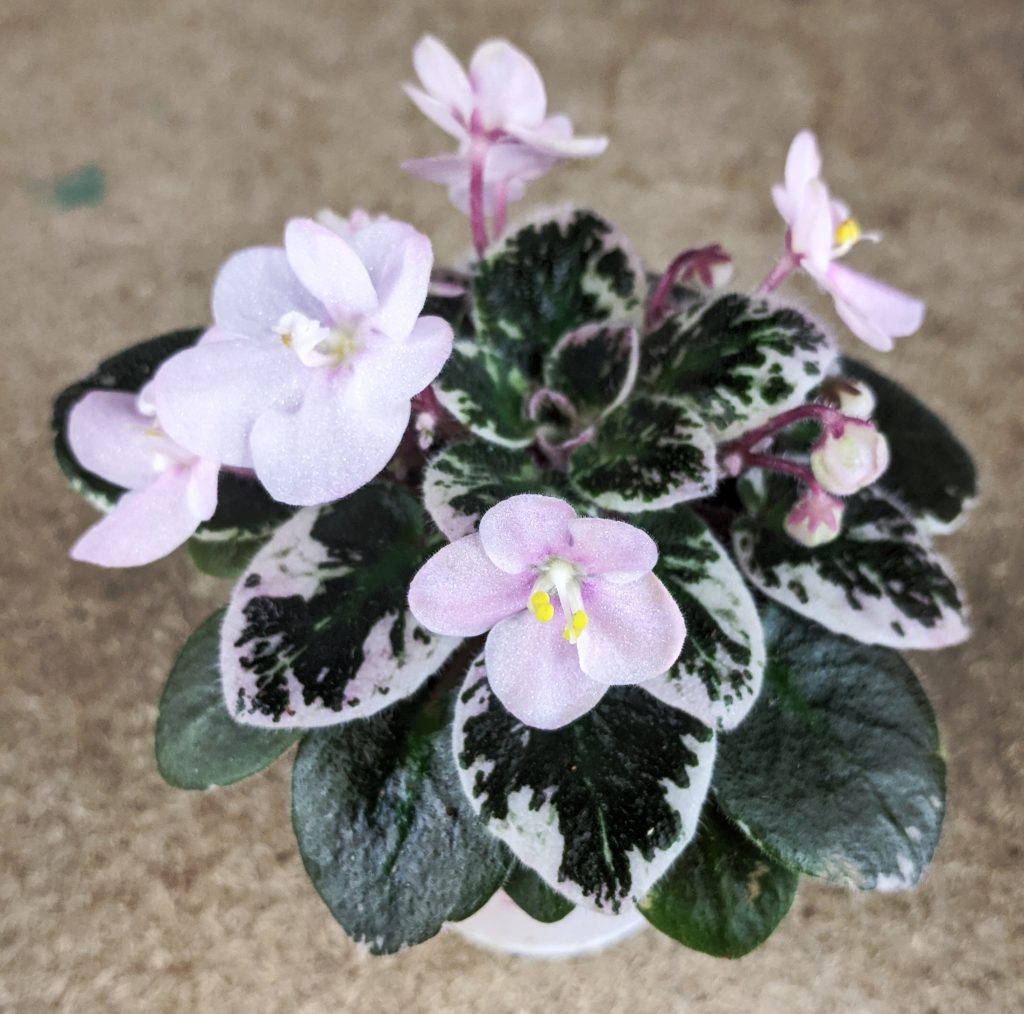
Should I quarantine/isolate even if I have just a few African Violet plants?
- Yes, it is advisable to quarantine/isolate your new African Violet plants even if you have just a few and are just starting out.
- This can keep not just your African Violet plants free from infection, but also your other houseplants.
- When your collection of African Violet plants is small, this is a great time to form a habit of quarantining/isolating newly acquired African Violet plants.
- This way as your collection grows, you don’t even have to give it a second thought when bringing in new African Violet plants into your growing area.
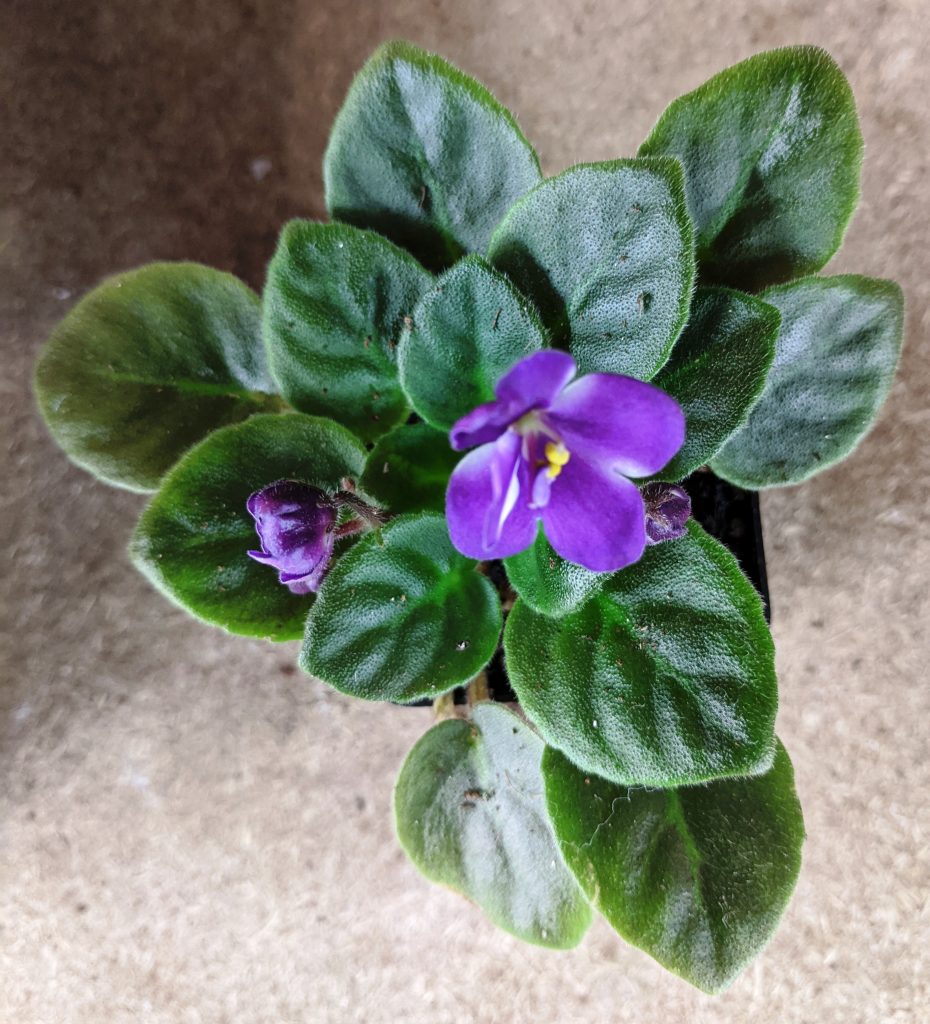
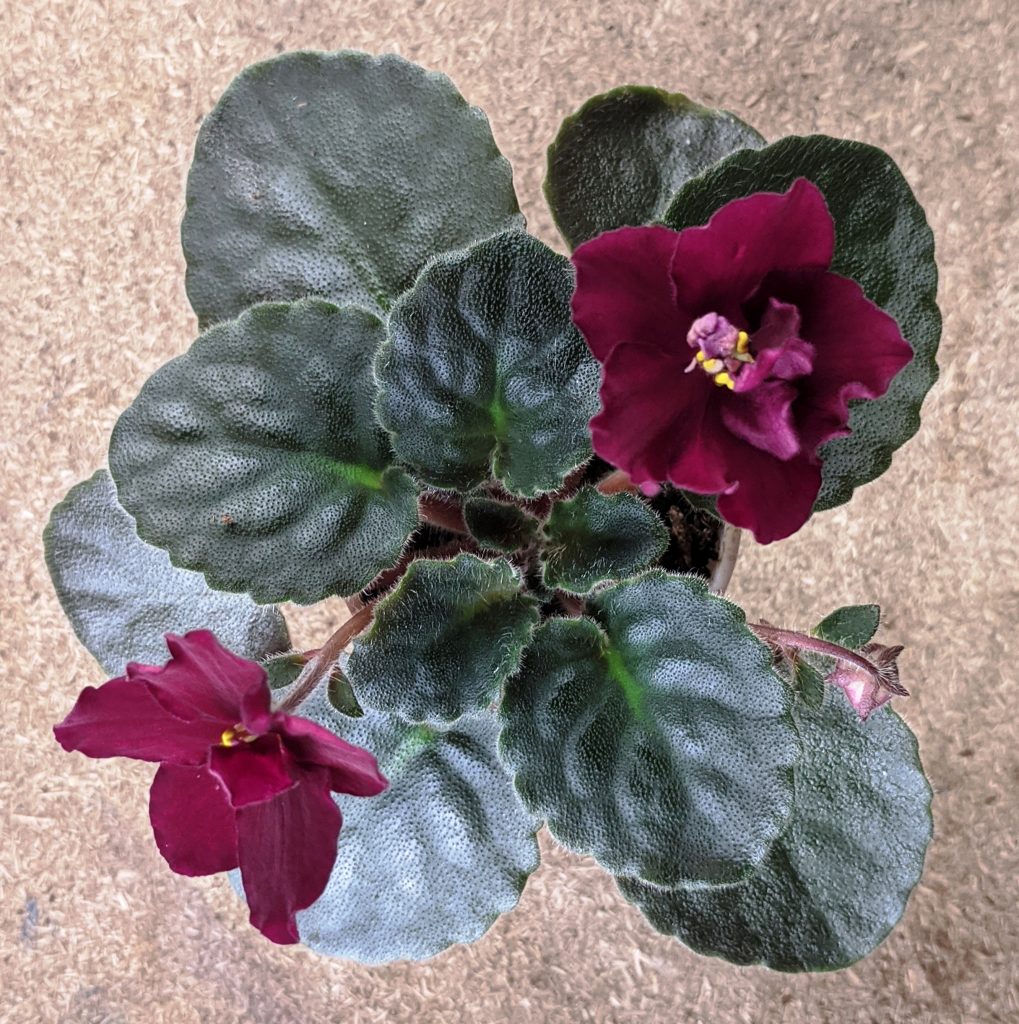
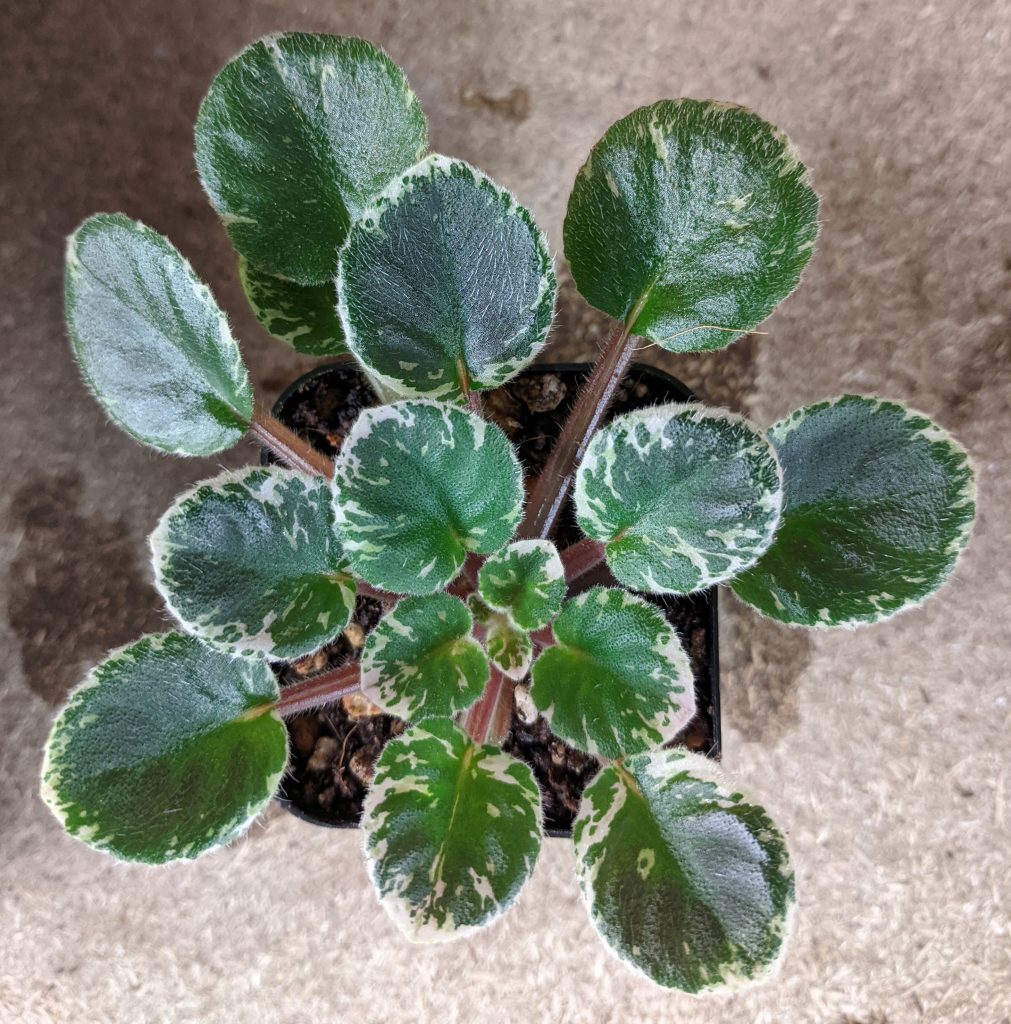
Should I quarantine/isolate my African Violet plants, even if I know the seller/vendor?
- Yes, just to be on the safe side, it is advisable to quarantine/isolate new African Violet plants from any source.
- Sometimes, even the seller/vendor/friend/club may not know that there African Violet plants are infected.
- No one would intentionally share or sell infected African Violet plants.
- If you acquired African Violet plants from different sources at the same time, then quarantine/isolate your new African Violet plant collection separately. Put each plant/plant collection from each source in a different area/room if possible or in a different plastic bag/container.
- Do not mix the plants from different sources together. Quarantine/isolate these plants separately.
Examples of self watering pots for African Violet plants as shown below:
Selecting a location for your quarantined/isolated African Violet plants?
- Find a location in your house that would be suitable to keep your newly acquired African Violet plants for a long period of time.
- This location should be away from your current collection of African Violet plants and away from your other houseplants.
- A separate room would be an ideal location.
- If you cannot find a such a location due to space or other constraints, then plant to quarantine/isolate your African Violet plant in a plastic zip bag or plastic container with a lid or a domed tray.
- If plants are being kept in a plastic zip bag, make sure its a large bag and make sure to zip bag closed from the top after placing plant in it.
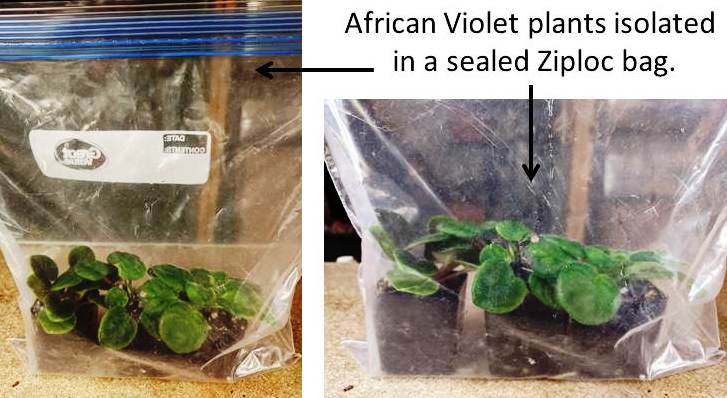
- If plants are being kept in a large plastic container, make sure to drill holes in the lid or check frequently how they are doing in terms of moist soil and humidity in the container.


- If plants are being kept in a domed tray, initially you can close the dome vents and open gradually as needed.
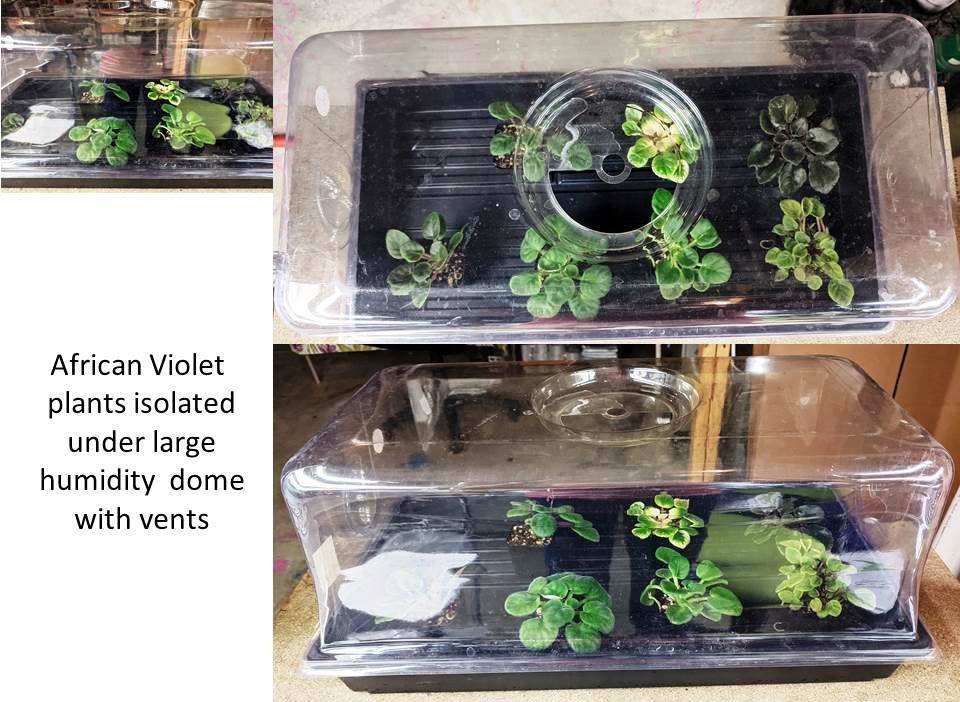
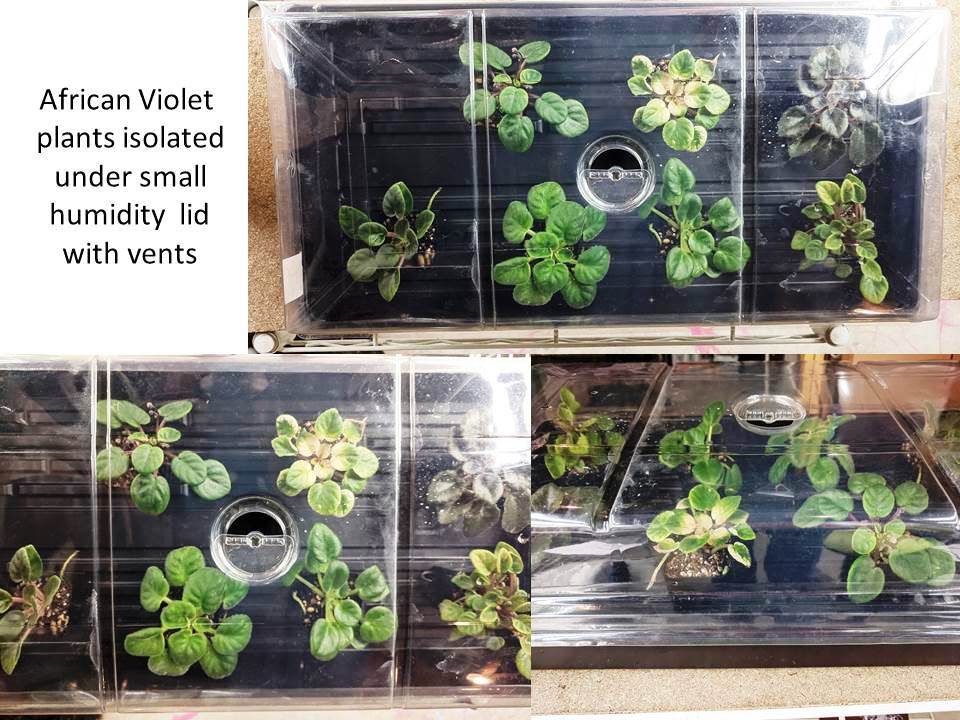
- Keep this bag/container/tray at least a few feet away from your current collection of African Violet plants.
- Even better would be to keep the bag/container/tray on an individual shelf or individual stand.
Below are recommendations of useful items which can be used to isolate your African Violet plants:
Preparing / inspecting your African Violet plant before quarantine/isolation?
- In a separate location away from your current African Violet collection, inspect your newly acquired plant.
- On a table, lay down some cut newspaper/packaging paper sheets.
- Prepare a disinfectant solution of 70% ethanol (70ml 99% ethanol + 30ml room temperature water) in a spray bottle or can purchase a prepared bottle of 70% ethanol and transfer to a spray bottle.
- Lay out your tools, such as sucker plucker, tweezers, scalpel or which ever tools you normally use to groom your violets with.
- Wear disposable gloves.

- Spray your tools with ethanol and allow to air dry. Spray your gloves with ethanol and allow to air dry.
- Put your first newly acquired African Violet plant onto the paper sheets.
- Using your cleaned tools, check and remove any suckers from the plant if present. (For more info, African Violet Suckers: What Are They And Removal?)
- Remove any old, brown, yellow leaves from the plant.
- Remove all buds, flowers, bloom stalks/stems from your African Violet plant. Removing these, will ensure any hitchhiking bugs like thrips are removed.
- Check the leaves/blooms for signs of powdery mildew (this has happened to me a few times, even with plants bought from a reputable seller). Remove these. Spray your gloves with ethanol after removing and allow gloves to air dry.
- Can treat for powdery mildew if present. Can make up a diluted solution of neem oil and spray, more details can be found here, Powdery Mildew On African Violet Plants.
Below are recommendations of useful items for cleaning / grooming your African Violet plants:
- After checking the top part of the African Violet plant, its time to check the soil/pot of the African Violet plant.
- Gently lift the African Violet plant out of its pot and inspect the soil for soil mealy bugs. If you see any white cottony webbing or white cotton mass, those could be signs of soil mealy bugs.
- Treat for soil mealy bugs if present, more details can be found here, Soil Mealy Bugs In African Violet Plants.
- Check the roots too, if the African Violet plant is heavily rooted and has a large root ball, can consider re-potting the plant in fresh soil (discussed in another section below).
- If the soil is dry, water the plant with room temperature water and allow water to drain out.
- After inspecting the leaves, stems and soil, you can clean the pot from the outside and bottom. Spray a paper towel /napkin with ethanol and use the damp napkin to wipe clean the pot from the outside and the base of the pot.
- After you have cleaned your pot, label the date/name of plant on the pot or on a label tag and insert in the soil. This will help you remember when the plant was first inspected and quarantined/isolated.
- Keep this plant aside for now, on a clean tray or shelf.
- Carefully wrap up the newspaper /paper sheet you were working on (careful to not disturb the loose soil on the sheet) and throw in a trash bag/can.
- Spray your tools with ethanol and allow to air dry. Similarly, spray your gloves with ethanol and allow to air dry.
- Then start working on your next African Violet plant on a fresh sheet of paper as described above.
- Remember to discard the paper sheets between each plant and to spray your tools and gloves with ethanol between each plant.
- Once all your African Violet plants are inspected, move them to there new location (as described above).
How long to quarantine/isolate your African Violet plant?
- If your acquiring your African Violet plant from a national vendor, round robin, African Violet club or friend, I would recommend quarantining / isolating for 1 month to 4 months maximum.
- If you are acquiring your African Violet plant from an international vendor, friend or club, I would recommend quarantining / isolating for a minimum of 3 months to 4 months maximum.
- Similarly, if acquiring your African Violet plant from a national African Violet show, I would recommend quarantining / isolating for a minimum of 3 months to 4 months maximum.
- After your quarantine / isolation period is over, I would recommend keeping your new African Violet plant on a separate tray/shelf for another additional 2 months in the same room / area with your current African Violet collection.
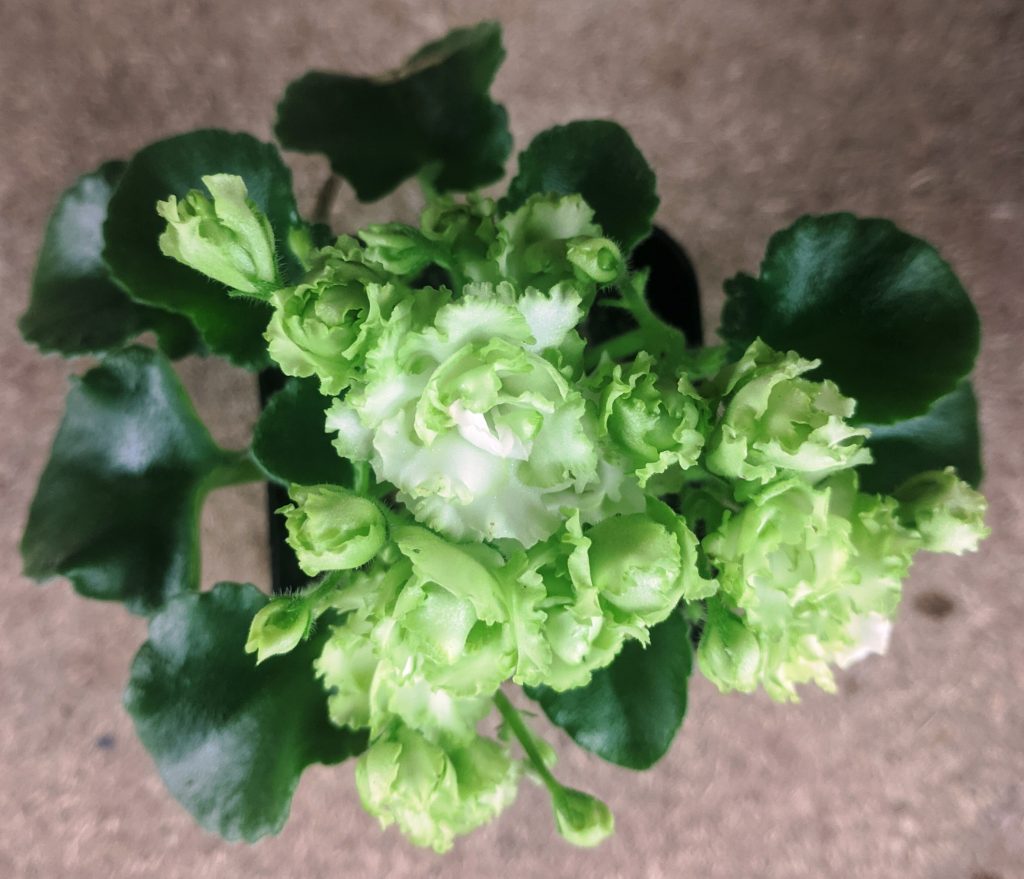
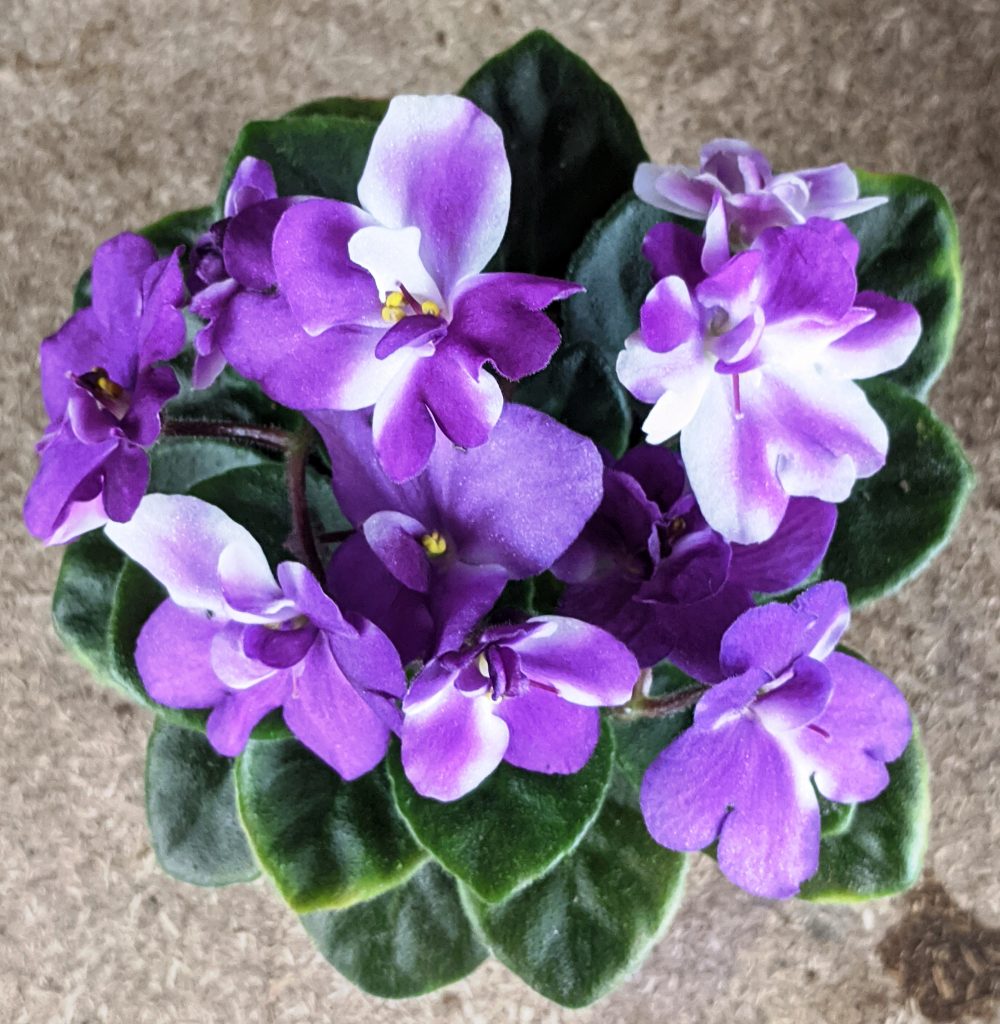
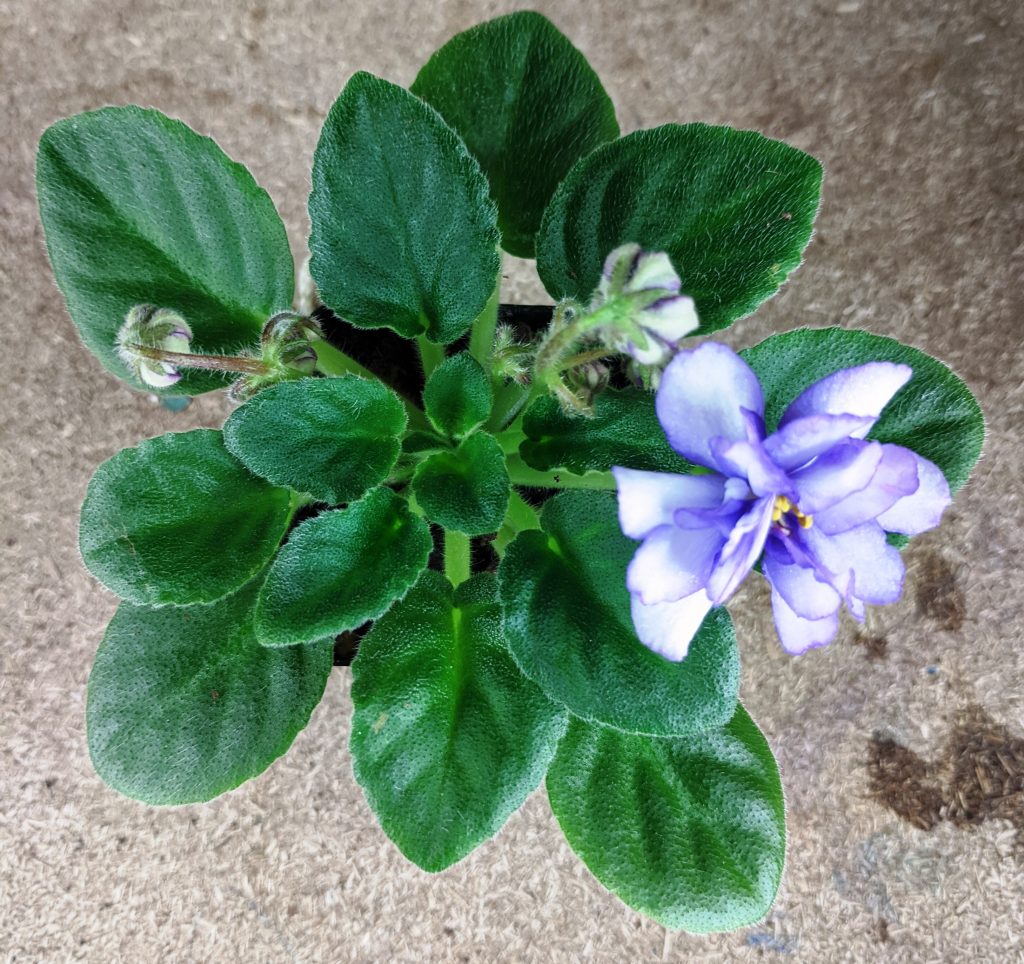
Should I handle African Violet plants arriving from outside my country differently?
- The preparation, handling and quarantine / isolation technique would be the same as mentioned above.
- I would however, quarantine / isolate for at least 3 months.
- Also if your purchase plants from different international vendors/friends, remember to quarantine / isolate them separately.
- So in one plastic bag/container put all African Violet plants from one vendor/friend and in another plastic bag/container place the plants from your other international vendor/friend.
- Remember to label the date/African Violet name on the pot before placing them in quarantine / isolation. Its easy to loose track of time. A written record also helps.
Examples of 2″ & 3″plastic pots, great to keep a few extra in your growing tools:
How to take care of your quarantined / isolated African Violet plant?
- Once you have kept your African Violet plant in quarantine / isolation, make a habit of checking on the plants at least once a week.
- Keep a separate set of gloves for these plants and remember to spray your gloves with 70% ethanol before and after inspecting your plants.
- If you see any signs of infection, start your treatment regiment.
- If the soil feels dry to touch, water the plants from bottom with room temperature water. (For more details, see How To Water African Violet Plants?)
- If your plastic bag/container has developed a lot of condensation/moisture inside, open up the bag/lid a little to air out the bag/container.
- If the soil looks too moist/wet, allow it to air dry, then re-seal/close bag/container again.
- After a month you can fertilize your African Violet plants with a weak solution (1/4tsp balanced fertilizer in 1 gallon water) every 2 weeks.
- If any new buds arise, its best to remove those, if your African Violet plants are still enclosed in the bag/container or in there separate location.
- Continue to groom your quarantined / isolated African Violet plants as you normally would. (For more details see, How To Groom African Violet Plants?)
Examples of commercially available African Violet fertilizers below:
Should I change the soil/ re-pot my newly acquired African Violet plants prior to quarantine / isolation?
- If your new African Violet plant is heavily rooted and there are roots coming out from the top /bottom of the soil/pot then it will benefit from re-potting in fresh soil.
- When re-potting do not remove too much of the roots, African Violets like to be root bound. (For more details, see How Often To Change African Violet Potting Soil Mix & Why?)
- Gently shake off any loose soil from the roots and re-pot the African Violet plant / root ball in a similar size pot or one size larger pot.
- If the root ball is too large and compacted, you can slice off the bottom 1/2 inch of the root ball with a sharp scalpel.
- Next, without disturbing the rest of the roots, re-pot the African Violet plant in fresh soil.
- Do not pot your African Violet plant too deep into the pot, that will lead to root rot.
African Violet, coco coir and other potting mixes shown below:
- Remember, when re-potting, use a clean disinfected pot. You can disinfect by spraying the pots with 10% bleach (1 part bleach + 9 parts water), allow to sit for a few minutes and wash pots with plain water.
- Place your newly potted African Violet plant in a plastic bag/container and zip / close the lid shut.
- When re-potting remember to do this in a separate area/room away from your African Violet collection.
- Lay down sheets of paper as described in the above section and re-pot each African Violet plant on a separate sheet of paper.
- Make sure to carefully wrap and discard each sheet of paper before moving onto your next plant.
- Disinfect your tools in 70% ethanol between each African Violet plant and before/after re-potting.
- This same practice can also be used when you are re-potting your normal African Violet collection of plants.
- Usually I do not re-pot the new African Violet plant in fresh soil immediately, I wait for the plant to acclimatize to its new home.
- Once its settled in after a few months, I will re-pot in fresh soil.
- However, there are exceptions, mentioned above if the plant is heavily rooted, re-pot.
- If the soil looks old/mushy/compacted and not light and airy then re-pot.
Does quarantining / isolating my new African Violet plants work to get rid of all pests?
- The realistic answer would be no, not all pests. In the short term, yes this will help in containing your infection to one or a few plants.
- This will also prevent the infection spread to your other plants.
- This is of course assuming if your plants are infected in the first place. You may have luckily acquired perfectly healthy African Violet plants.
- However, in the longer term infection of your African Violet plants is inevitable.
- Pests/bugs/disease may enter your plant room area not just from your newly acquired African Violet plant but also from your other houseplants, from your outdoor garden, through an open window and even from a flower bouquet arrangement.
- Pests such as spider mites despise high humidity and light, they hide in the soil. As soon as you remove the African Violet from a high humidity environment (a plastic baggie/closed container), the spider mites re-emerge.
- However, pests such as cyclamen mites love high humidity and low temperatures. They also do not like light and hide in the crown or leaf folds. They are very small in size and can spread by crawling from one plants leaf to another.
- That’s why its a good idea to keep your recently quarantined / isolated plants on a separate tray / shelf when you reintroduce these violets back to your collection. Space these plants out, so the leaves are not touching each other.
- Pests such as gnats dont damage your plant that much, if its a mild infestation, they are just annoying. They can however, fly from one plant to another and can easily spread through your African Violet collection. Usually plants/soil from big box stores carry gnat eggs.
- Pests such as soil mealy bugs can be transferred easily by climbing out underneath one pot and walking over into another pot. That’s why if you are wicking African Violet plants, its advisable that each plant has its own individual water reservoir / container. More details, can be found here, Wick Watering for African Violet Plants.
- Placing wicked African Violet plants on a common wicking / capillary mat should be avoided unless you are absolutely sure that your plants are free from infection or if you are regularly applying your plants with a systemic insecticide.
Examples of capillary matting used for watering African Violet plants shown below:
- Another point to remember is to leave some space between your African Violet plants if possible. Try to avoid leaves of one plant from touching the leaves of another plant. Pests can travel this way too. Of course, if you have a large African Violet collection, this is not always possible to do.
- Pests such as thrips are carried over onto buds, blooms, bloom stalks and stems. As mentioned previously, it is best to remove all blooms, buds and stalks from new African Violet plants to prevent the transfer of thrips.
- Quarantining / Isolation of your African Violet plants can definitely help to a certain extent in keeping pests at bay in your plant area.
- Combining this with keeping a clean plant work area, disinfecting your tools, gloves and routinely washing your used pots in diluted bleach can help to keep infections at bay.
- If after quarantine / isolation and 6 months of treatment for an infection, the plant still has pests, then its best to get rid of that plant and start over.
- If its a really valuable plant, you can save leaves, otherwise its not worth transferring pests even through leaves. If you save leaves, remember to rinse them in a diluted bleach solution followed by a rinse with plain water, before using.
Should I spray insecticide / pesticide on my newly acquired plants?
- If you don’t want to isolate for months and keep inspecting the plant, you can add chemicals to the soil which can remove any bugs to begin with.
- I do not do this personally, I do not recommend using harsh chemicals.
- However, there are others who grow large collections of violets and believe prevention is better than cure.
- I would rather wait to see a bug/disease/problem with the plant, and then treat.
- Though with violets, treatment can take up a whole lot of time and the bugs can spread easily through your whole collection.
- If you have a small manageable collection, then isolation without chemicals is good enough. However, if you have a large collection, invested a lot of time/money into your African violets, then using chemicals as a systemic/preventive treatment can be an option to consider.
- For the soil treatments, you can add chemicals such as Marathon liquid/granules into the soil mixture during re-potting (which contains Imidacloprid as the active ingredient). Please check, whether Imidacloprid is legal in your state, it may be banned in certain states, including AK, CA, CT, HI, MD, NY.
- You can also wash the leaves and plants gently with dish soap /water or murphys soap oil as soon as you bring them in the house. Then rinse off with plain water, blot excess water and allow plants to air dry in a dark area.
- You can also spray neem oil on the plant (this can act as a preventive too) and then place plant in plastic bag/container.
Below are recommendations of useful items for pest management on African Violets plants, use only if required:
Instead of quarantining / isolating African Violet plants, can I just decapitate and re-root the crown?
- Yes, this would be an option, however an extreme one.
- You can maybe try this on a few plants (1-2).
- If this technique works for you, you can include this as a regular part of your routine when bringing home new African Violet plants.
- Another reason to use the decapitating technique would be soil mealy bugs.
- If during inspection of your newly acquired African Violet plants you lift the plant out of the pot and find soil mealy bugs in the soil, then decapitating the neck can be considered.
- Before you get started, set up the your work table with paper sheets, disinfectant solution, tools and gloves.
- In this method first remove the older lower leaves from your African Violet plant.
- Clean the plant neck / stem by scraping off the scaly bits.
- Slice the plant neck using a clean and sharp scalpel.
- Re-pot the neck in a light and airy loose soil and place plant in a ziploc bag, close shut.
- This method is suitable for larger more mature plants.
- I would not do this method for smaller starter plants (not sure if it would work well).
- By using this method you ensure that you will not transfer any soil mealy bugs from your old soil to your new soil.
- After decapitation make sure there is no old soil clinging on the neck or on the leaves of the African Violet plant.
- You want to make sure none of the old soil is sticking around on the African Violet plant.
How to re-introduce your quarantined / isolated African Violet plant back to your collection?
- When bringing your quarantined / isolated plants back to your plant room / area try to keep them in a separate spot.
- This spot could be a separate tray, shelf or stand; away from your current African Violet collection.
- Do not yet mix these plants with your African Violet collection.
- Keep them on a separate tray for another 6 months, before mixing them with your African Violet collection.
- Do not share a wicking mat or wicking reservoir with these plants.
- Keep a close eye on them for any appearance of infection.
- If possible keep these African Violet plants on a lower shelf. Pests/bugs prefer to crawl downwards then upwards.
- If you have the plants on a lower shelf, there are less chances of pests/bugs crawling up to your African Violet collection on the upper shelves.
- If after 6 months, nothing shows up, its time for re-potting, can re-pot in fresh soil and combine with your other African Violet plants.
- Enjoy, your quarantine / isolation period is now over!
Pots with decorative designs, can be used as a nice outer container for your African Violet plants, as shown below:
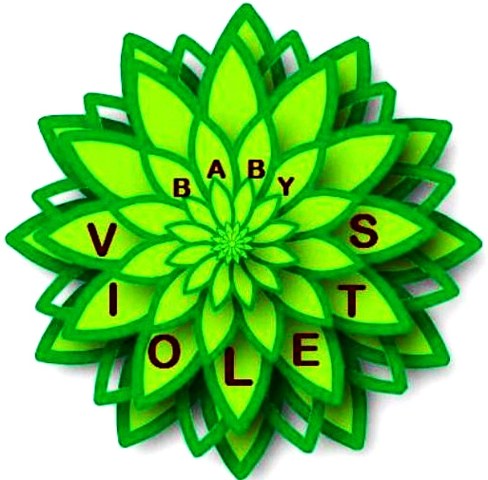
*Our Affiliate Programs: We are a participant in the Amazon Services LLC Associates Program, an affiliate advertising program designed to provide a means for us to earn fees by linking to Amazon.com and affiliated sites.
Though we do link to many items on Amazon out of convenience to our readers, we do also participate in other affiliate programs that also pay us a commission for any purchases you might make through our links (at no additional cost to you!).


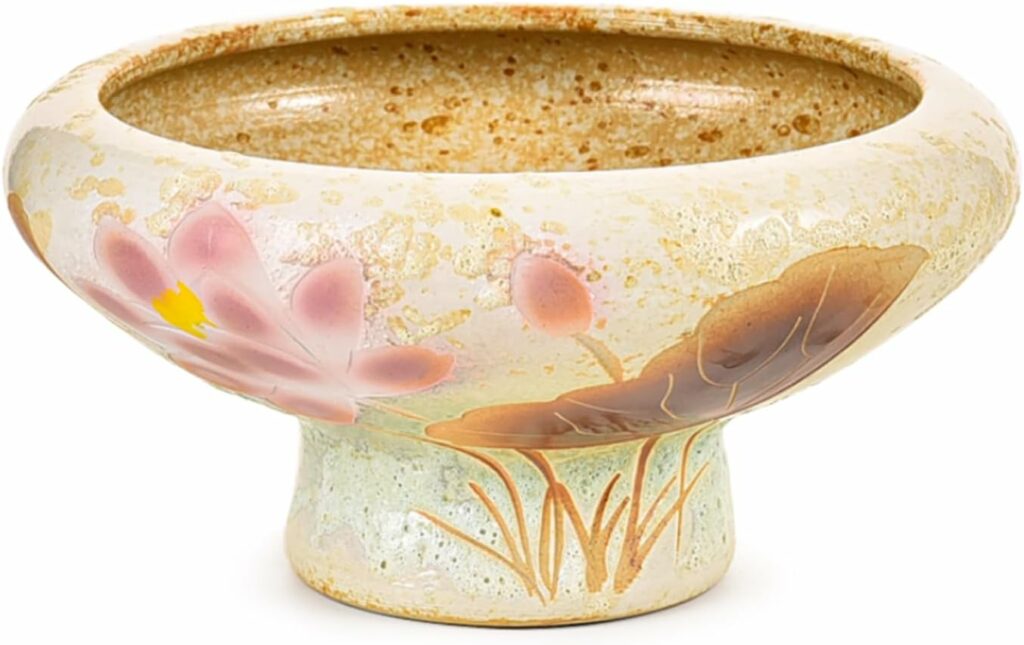
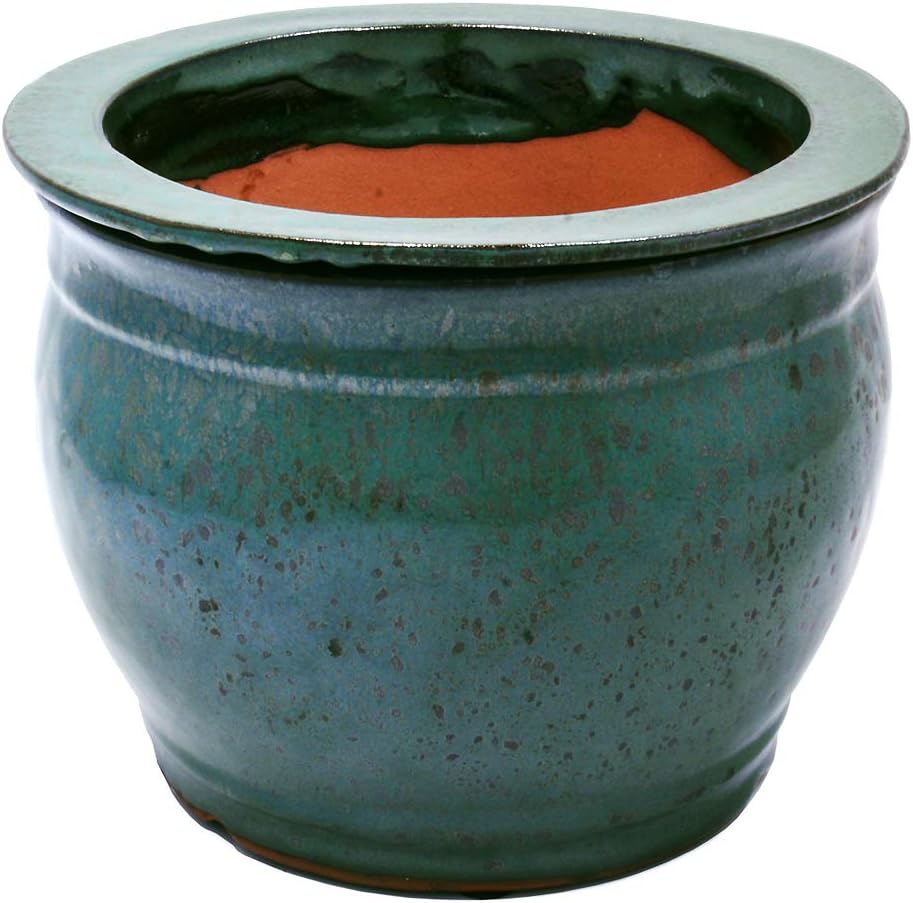
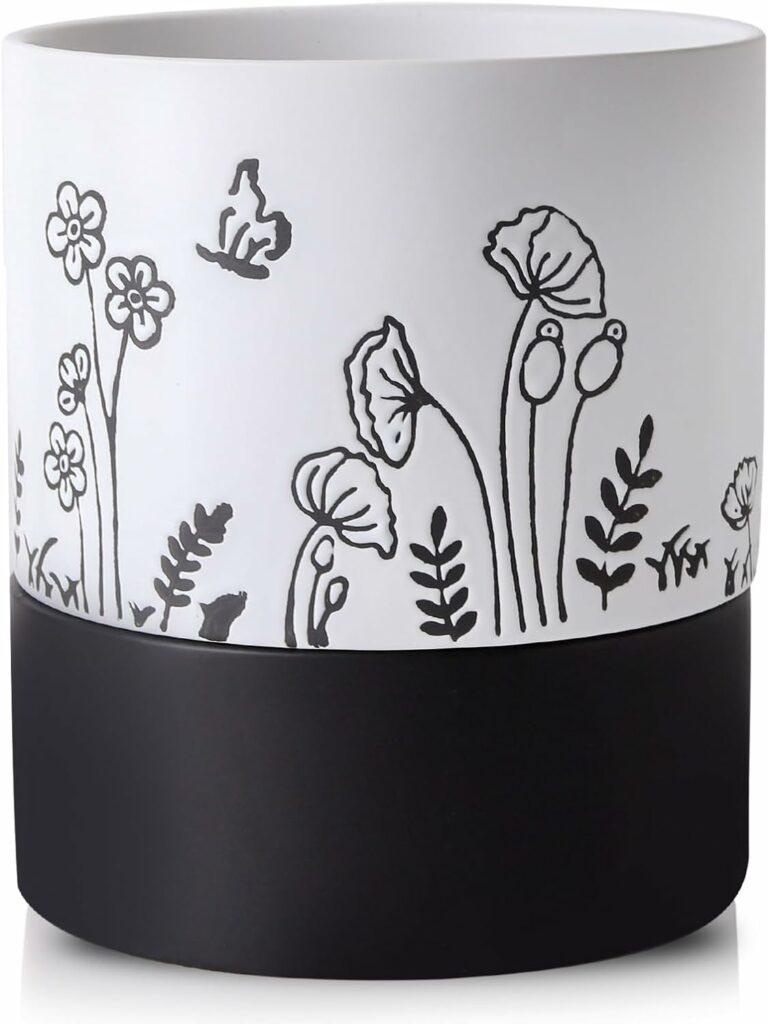
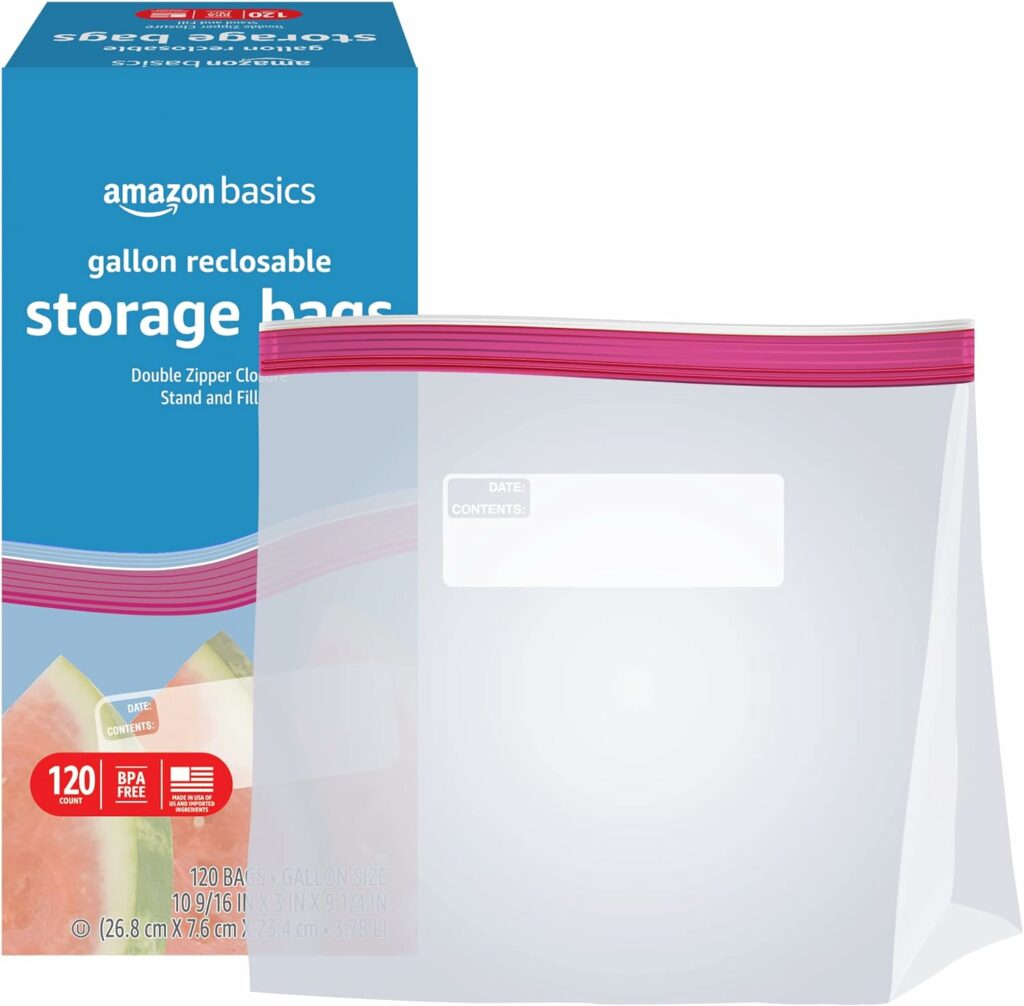
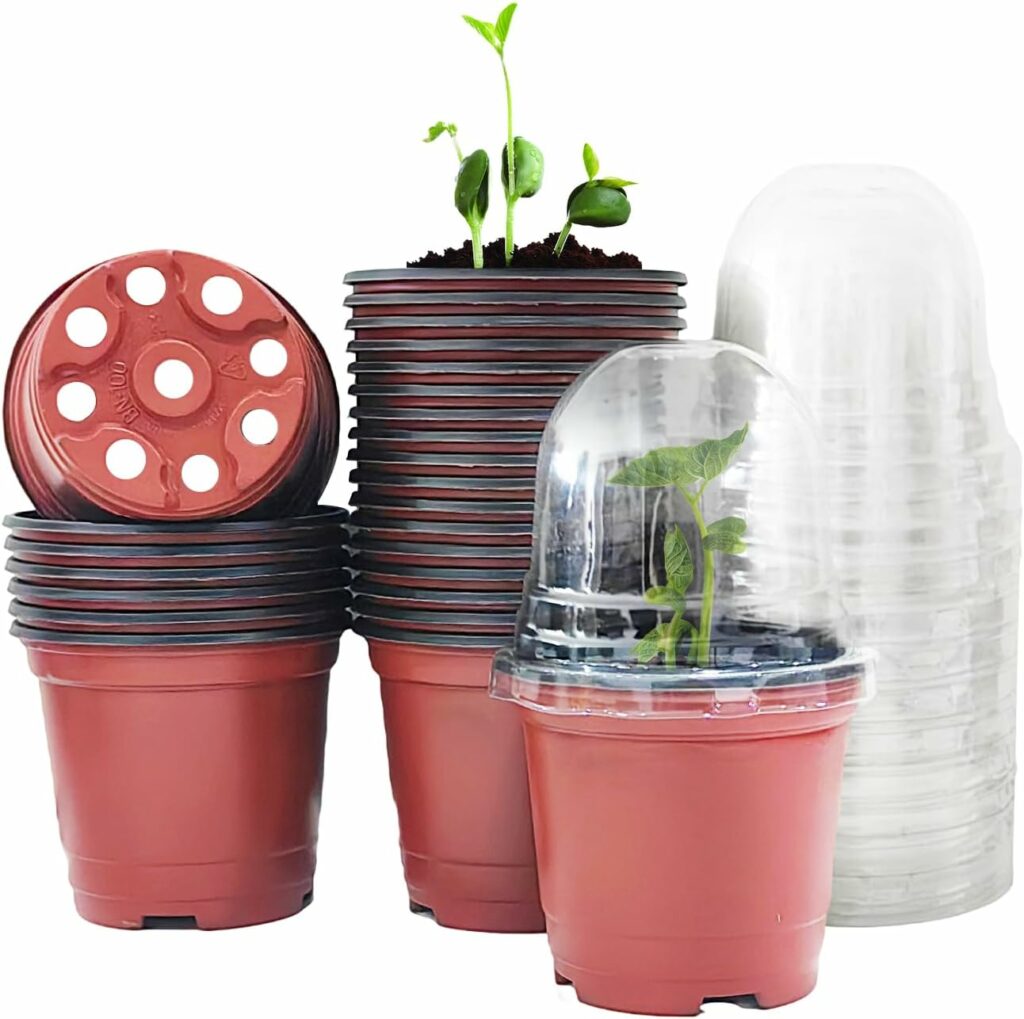
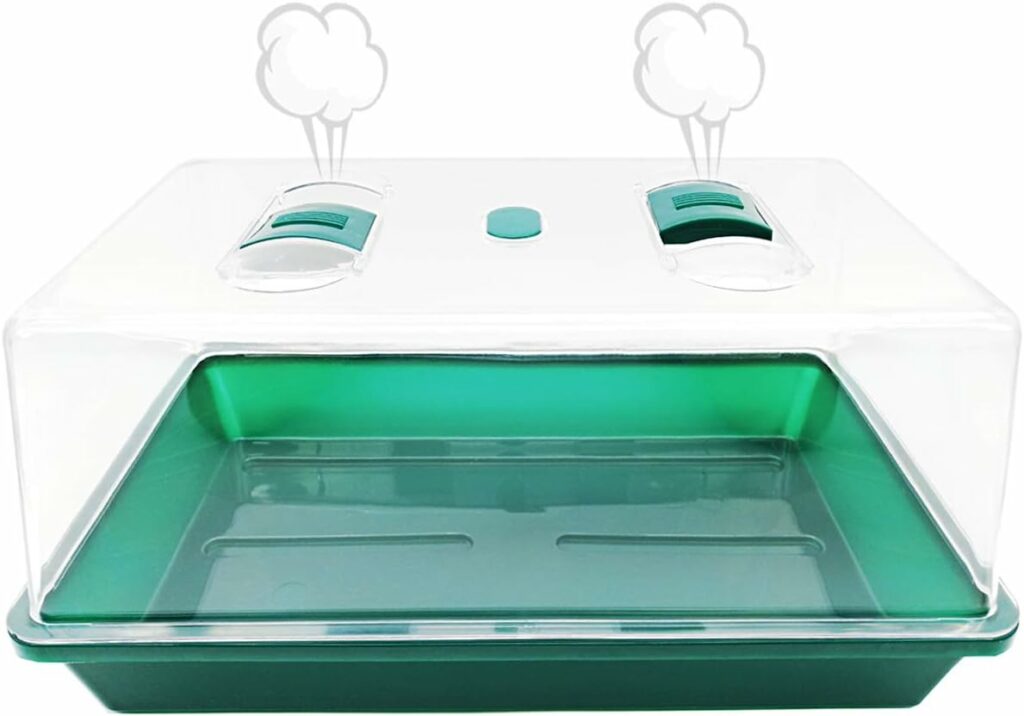
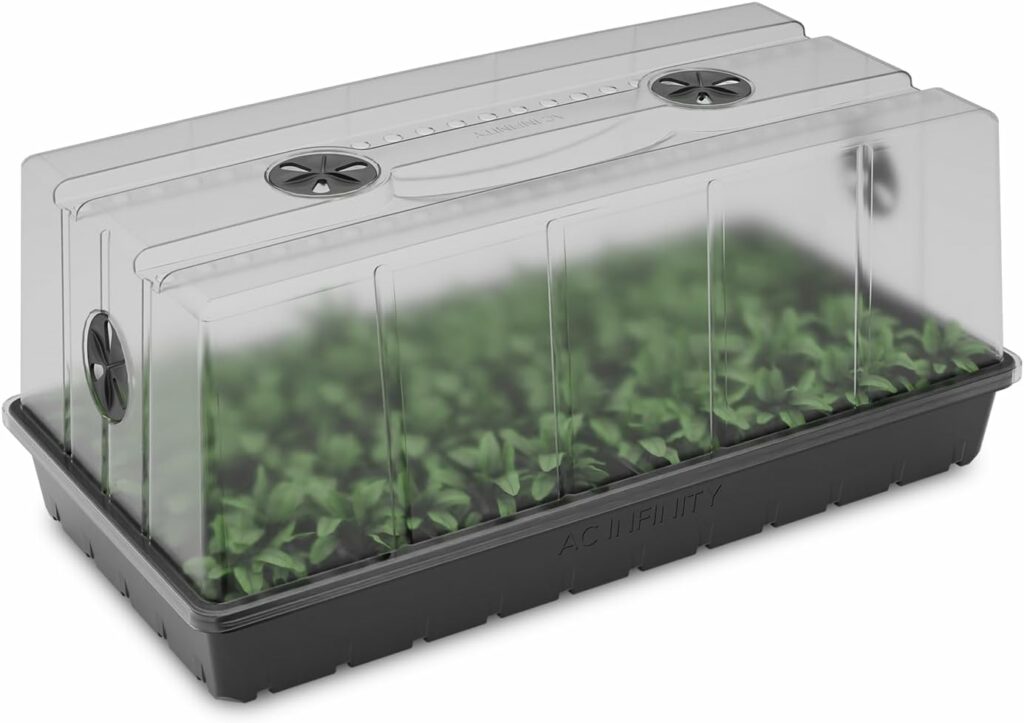
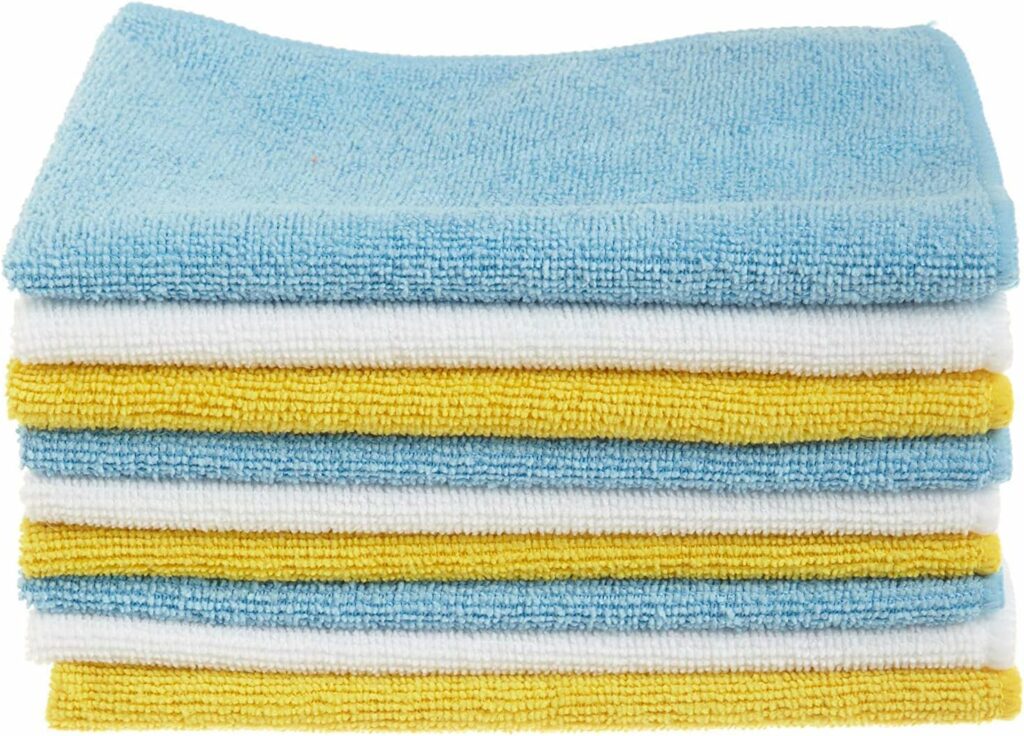

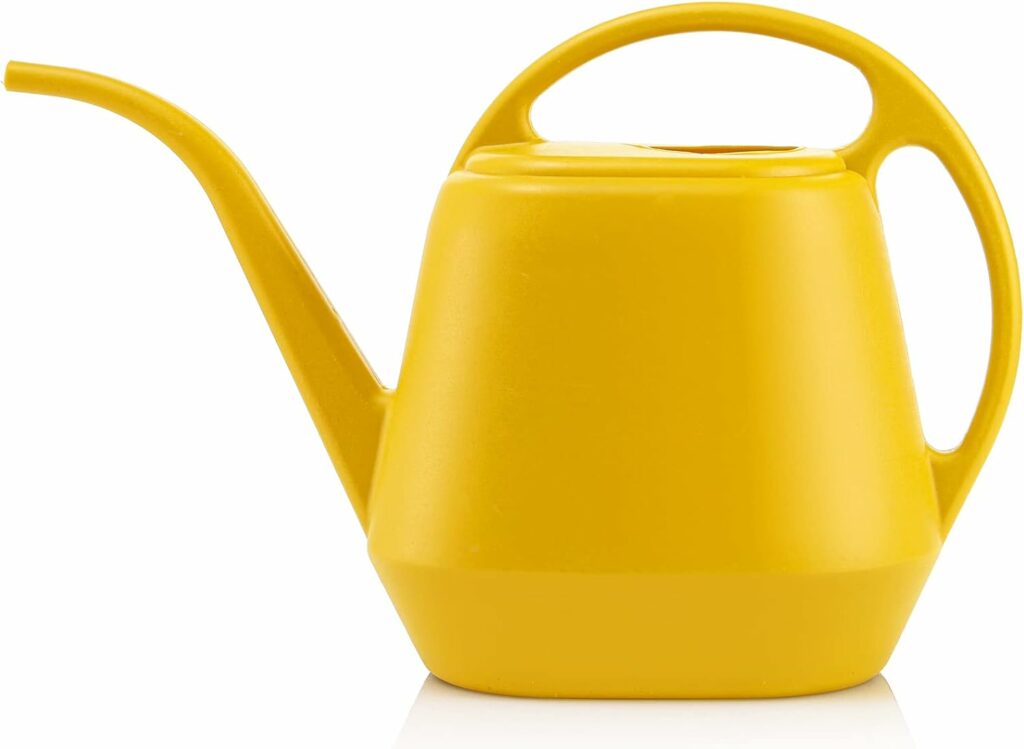
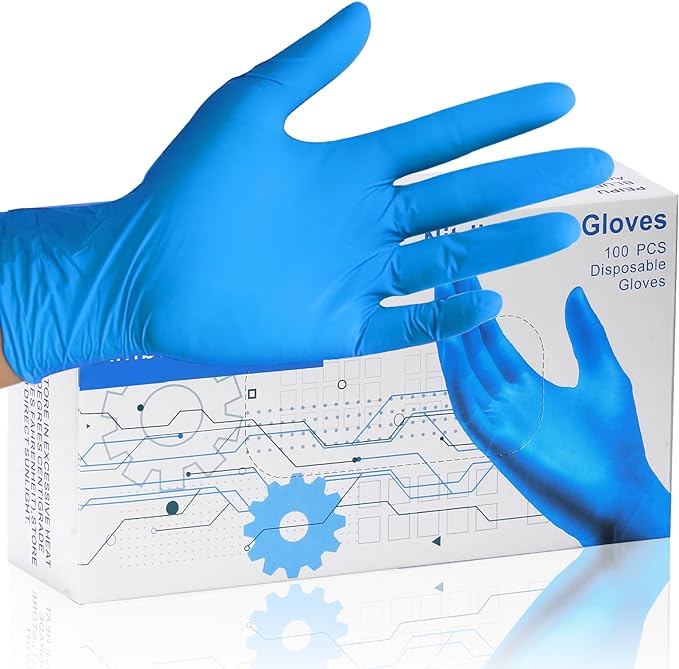
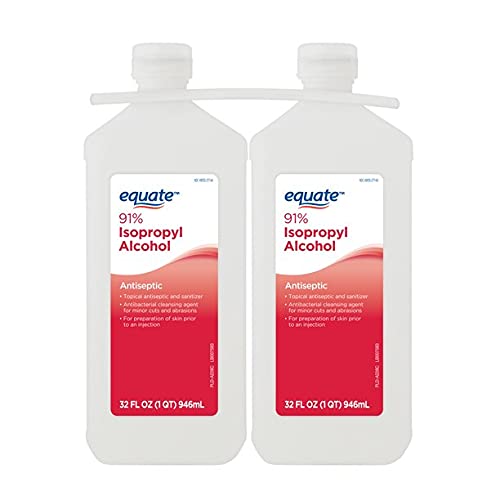
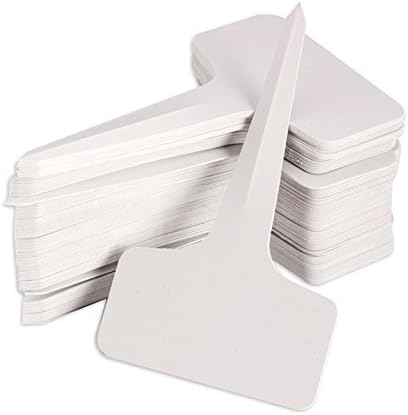
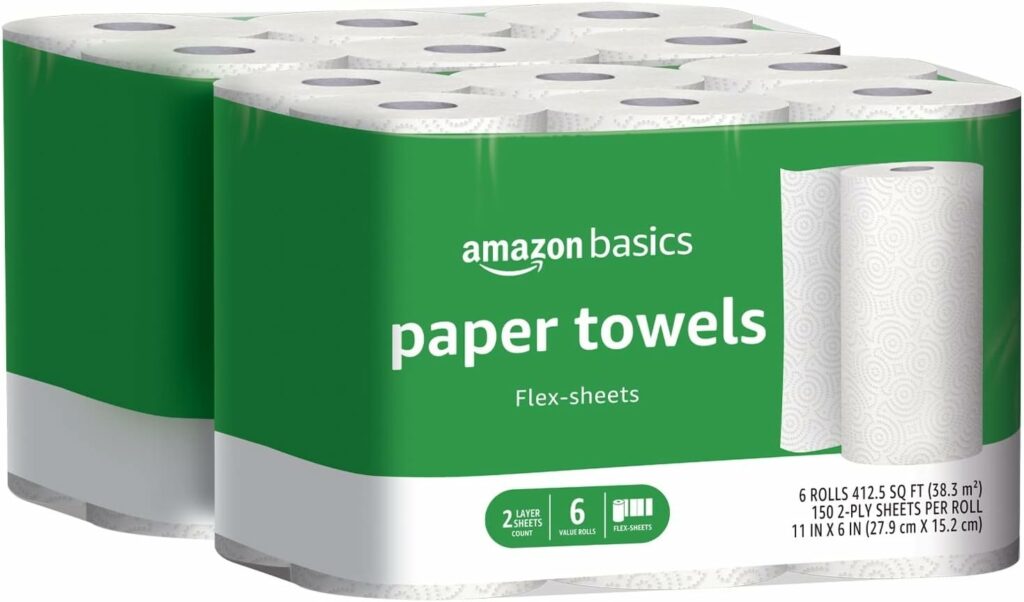
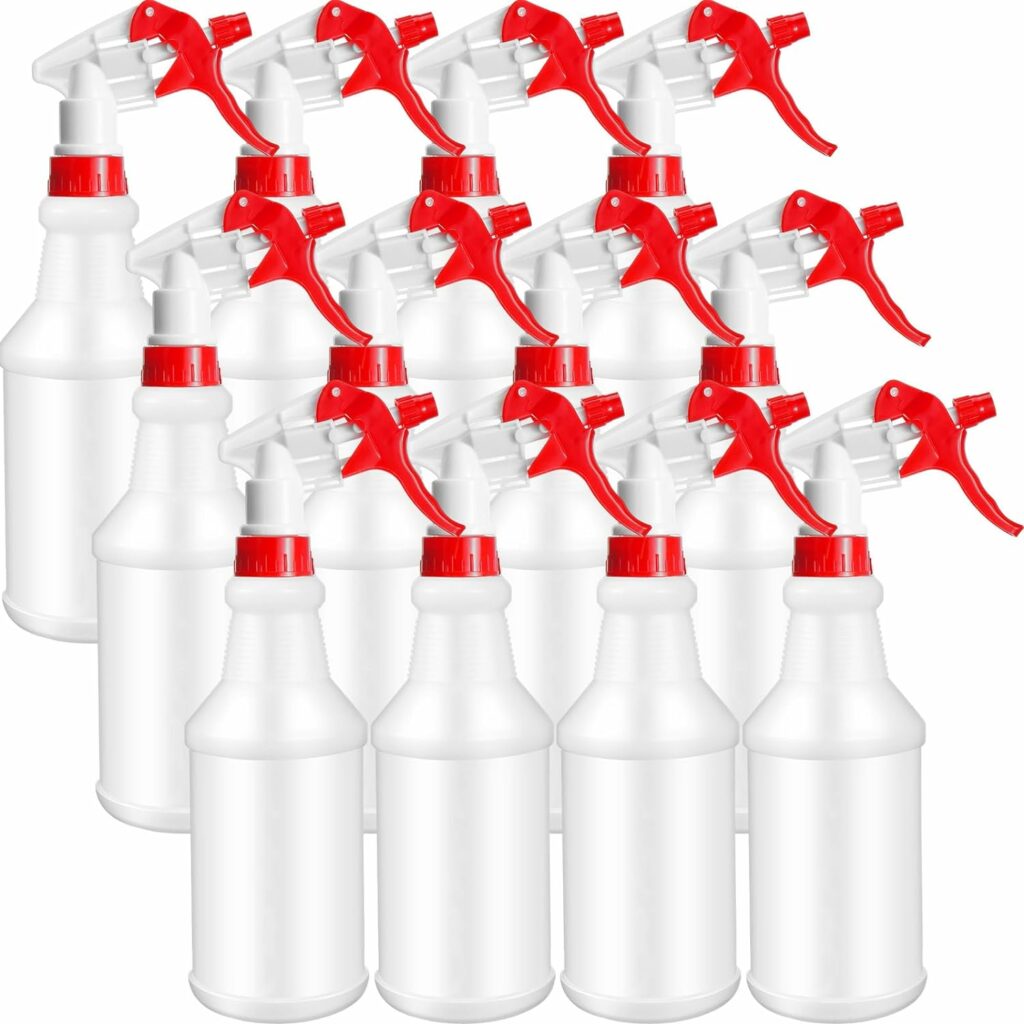
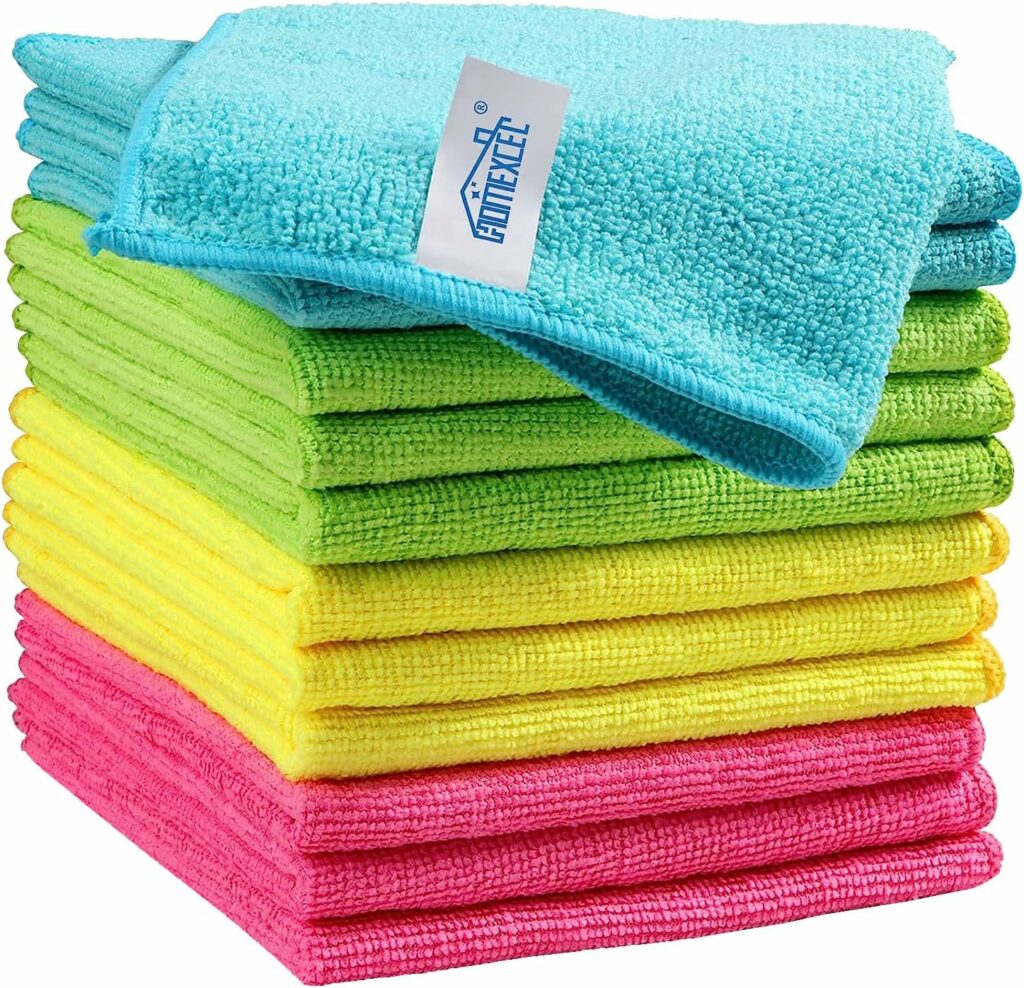
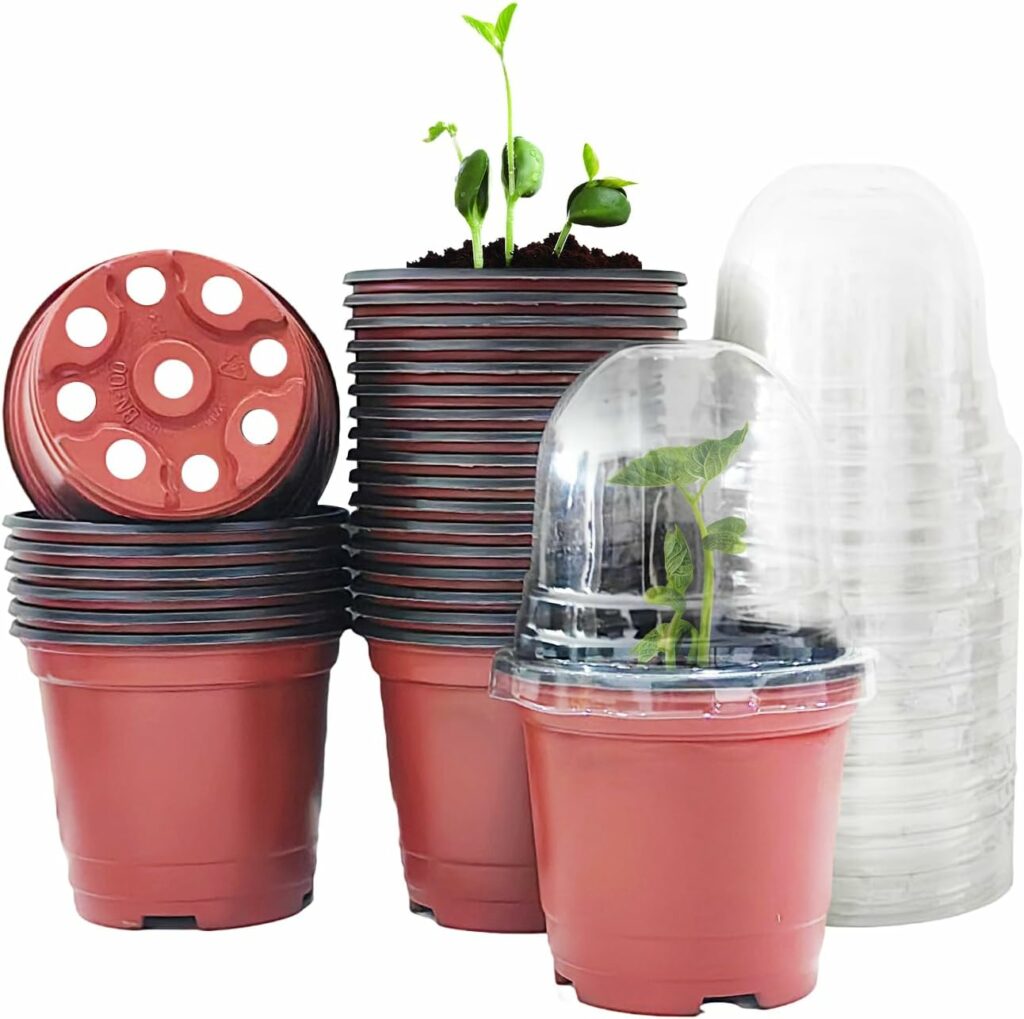
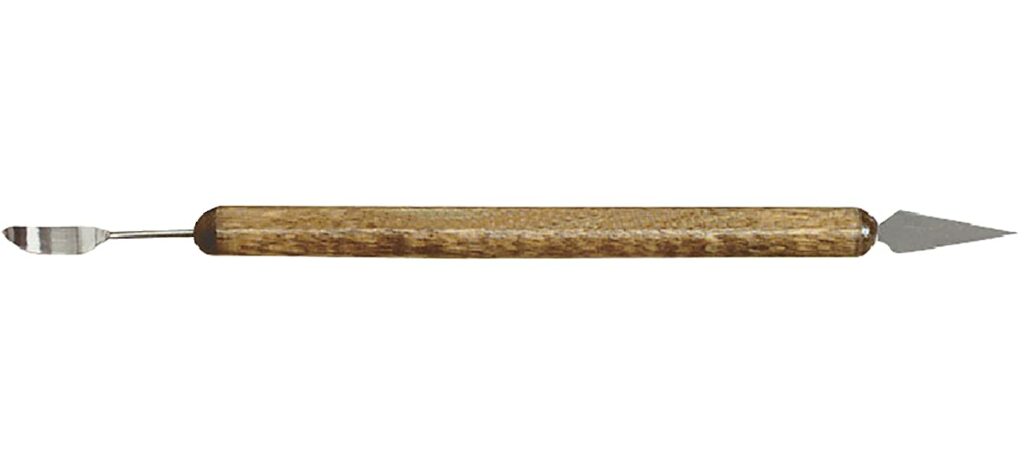

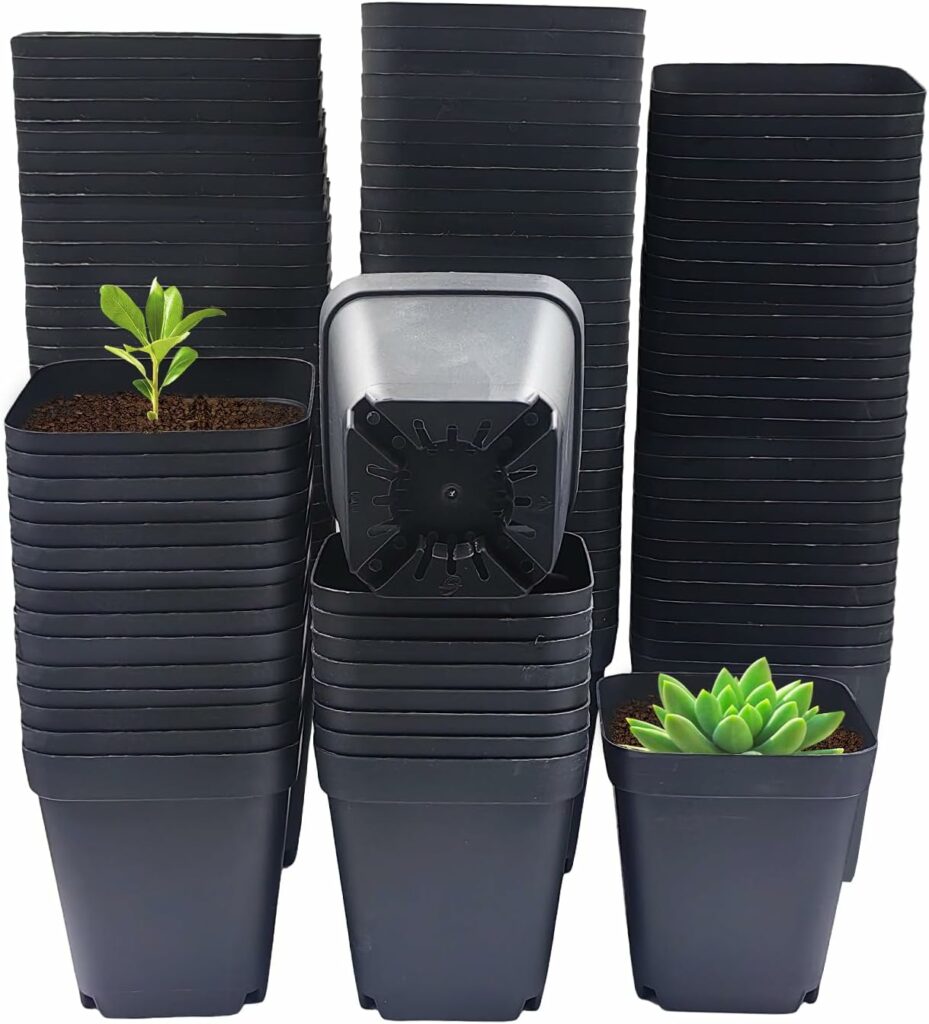
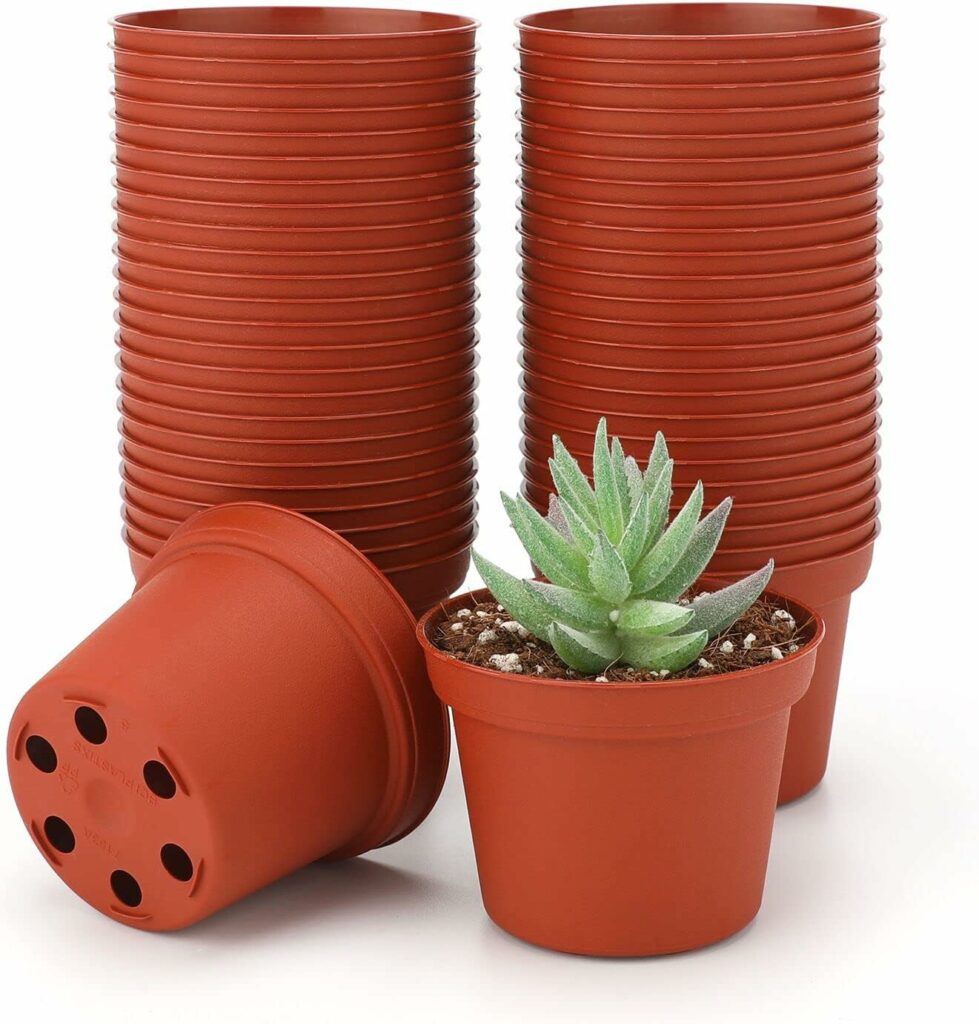
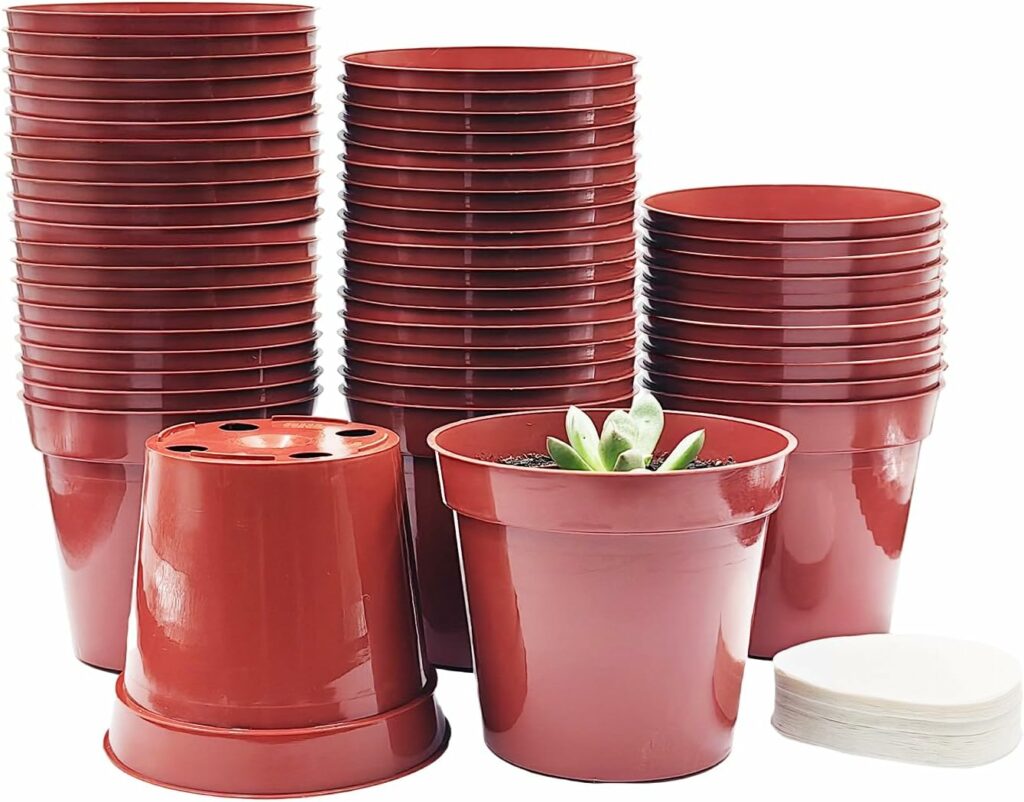
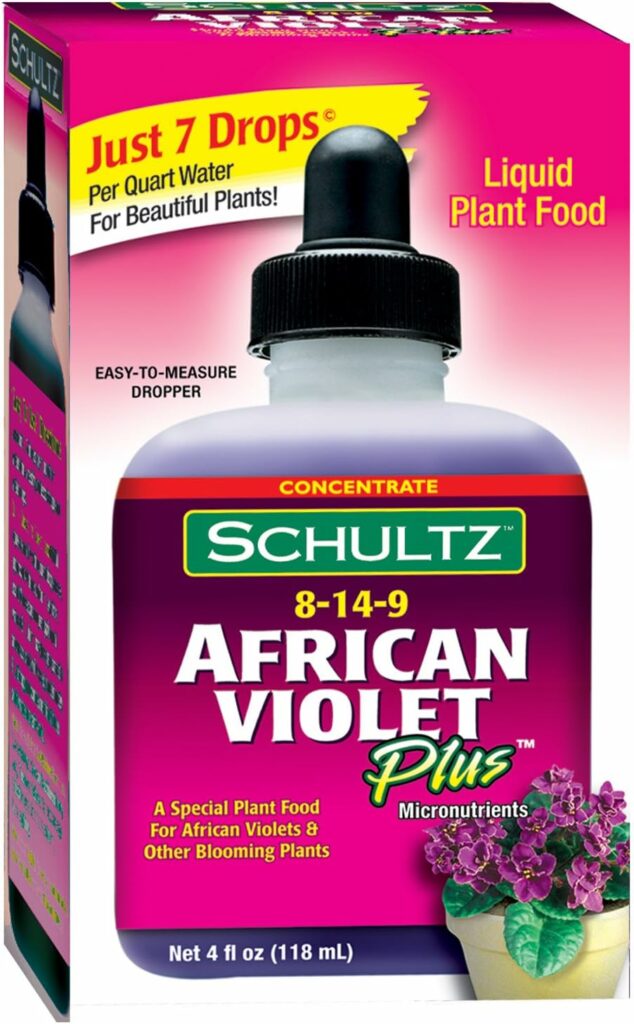
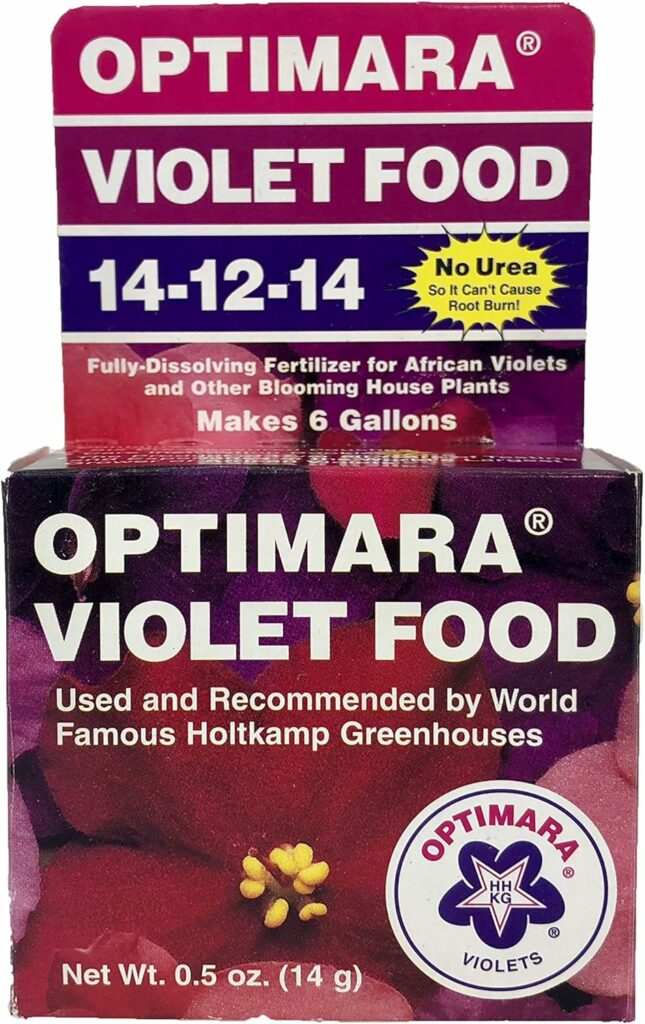
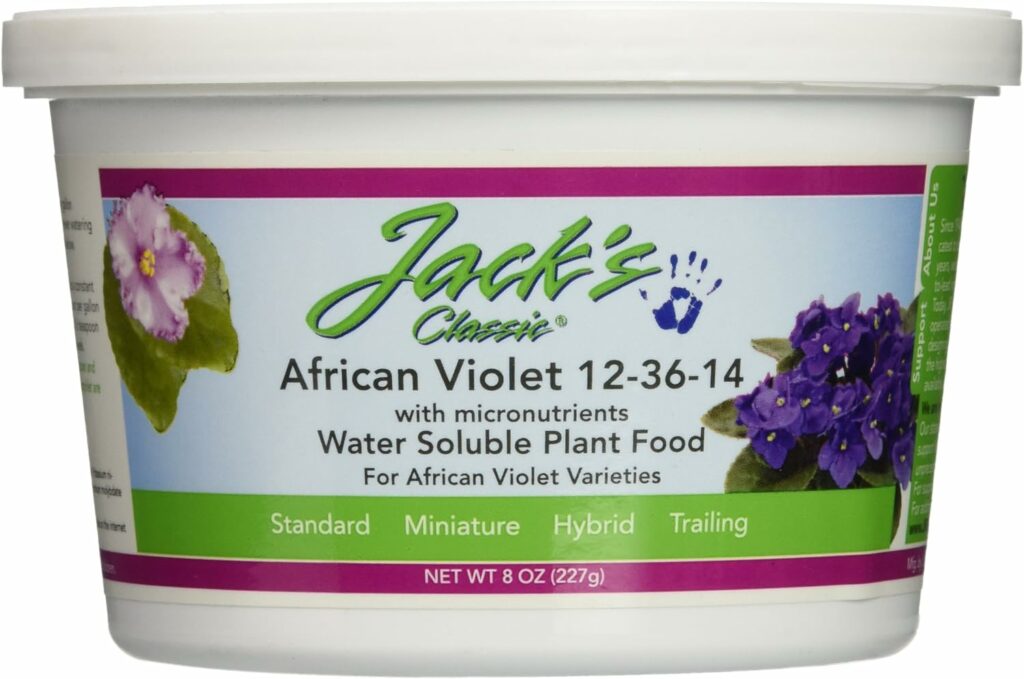
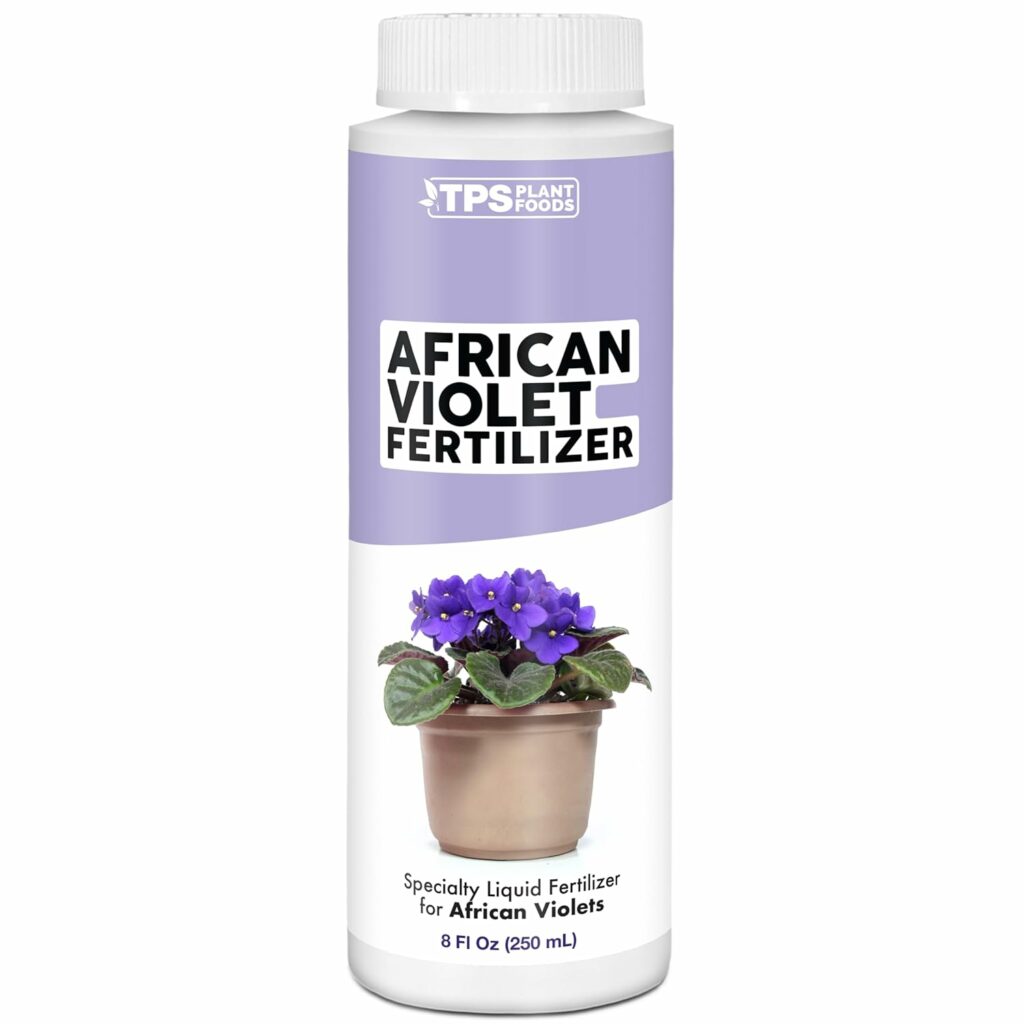
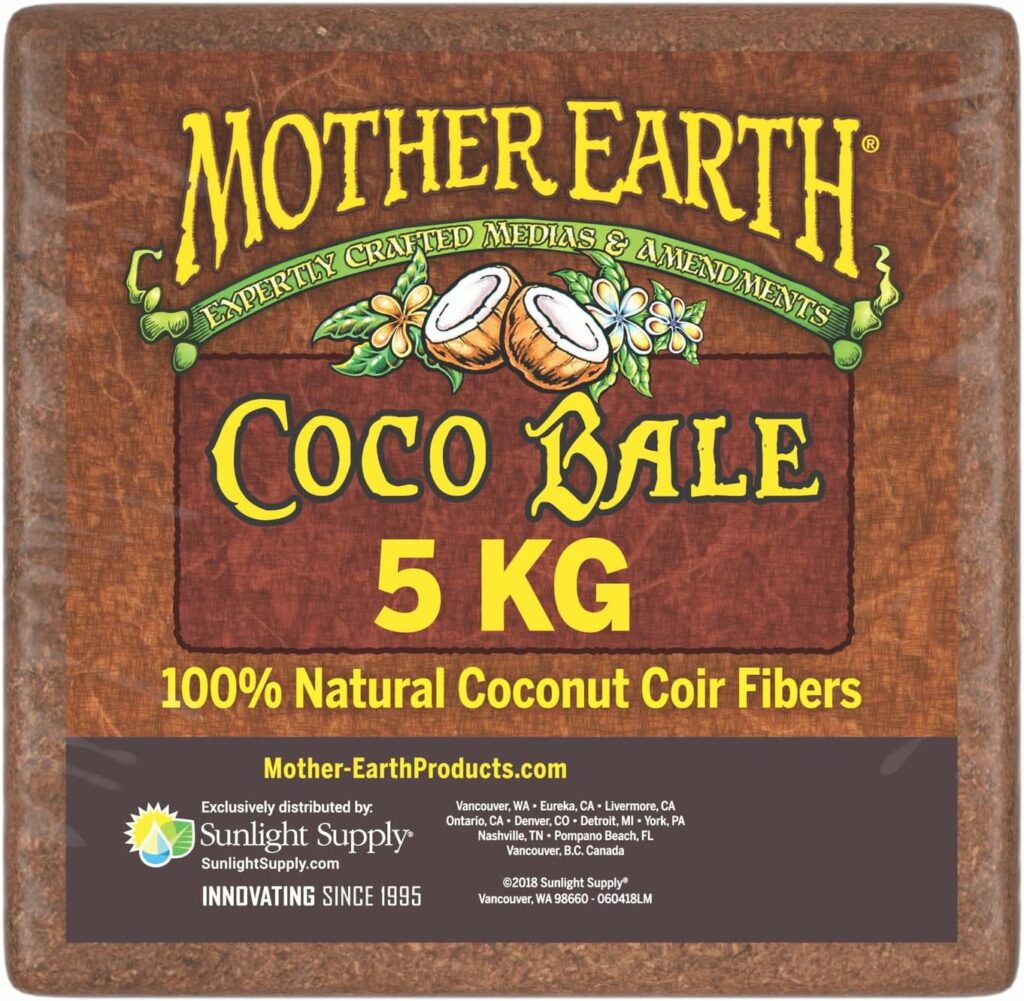
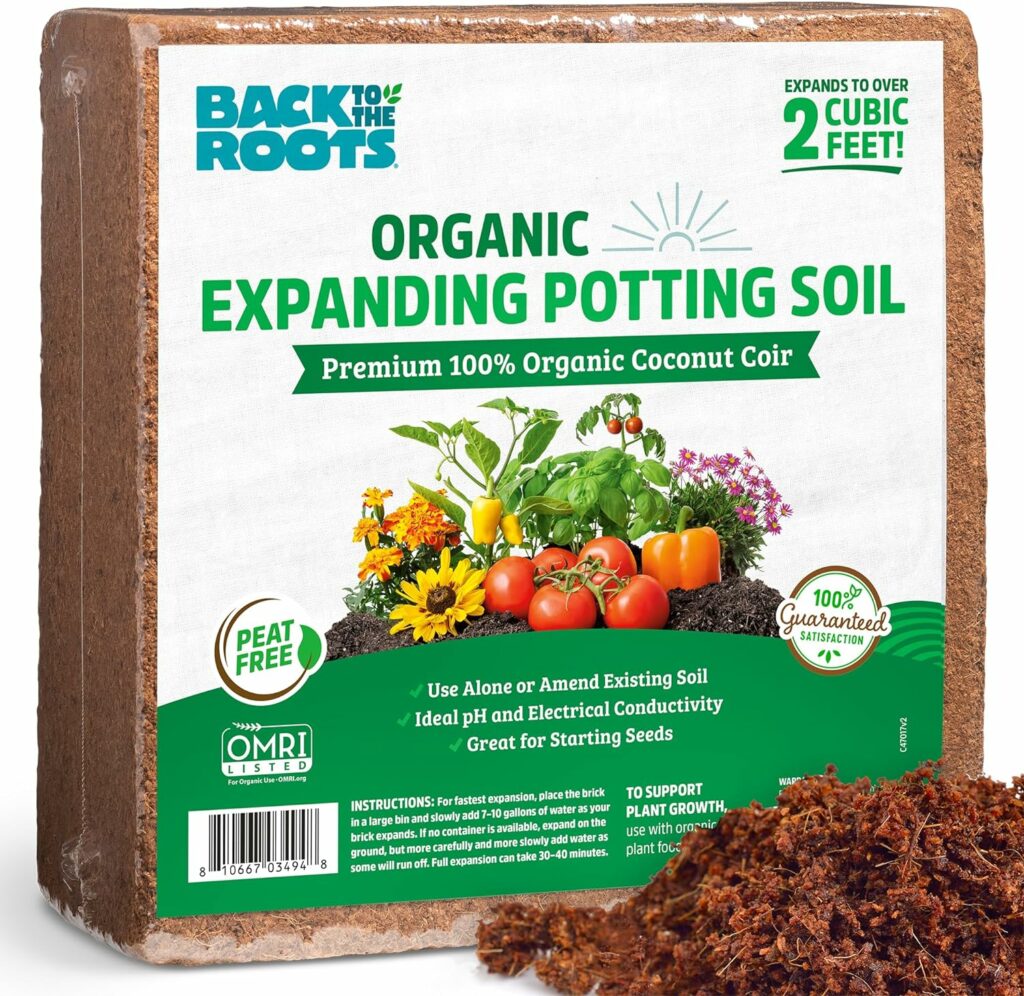
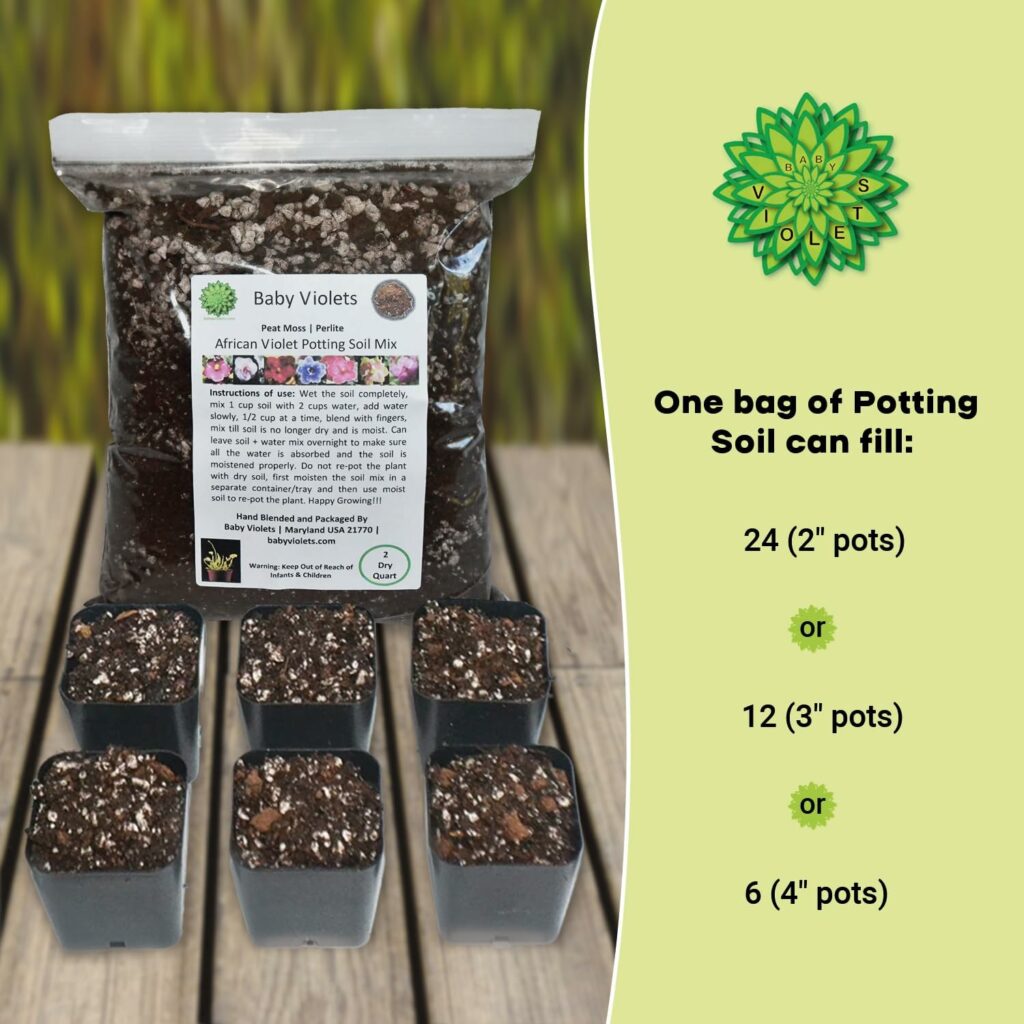
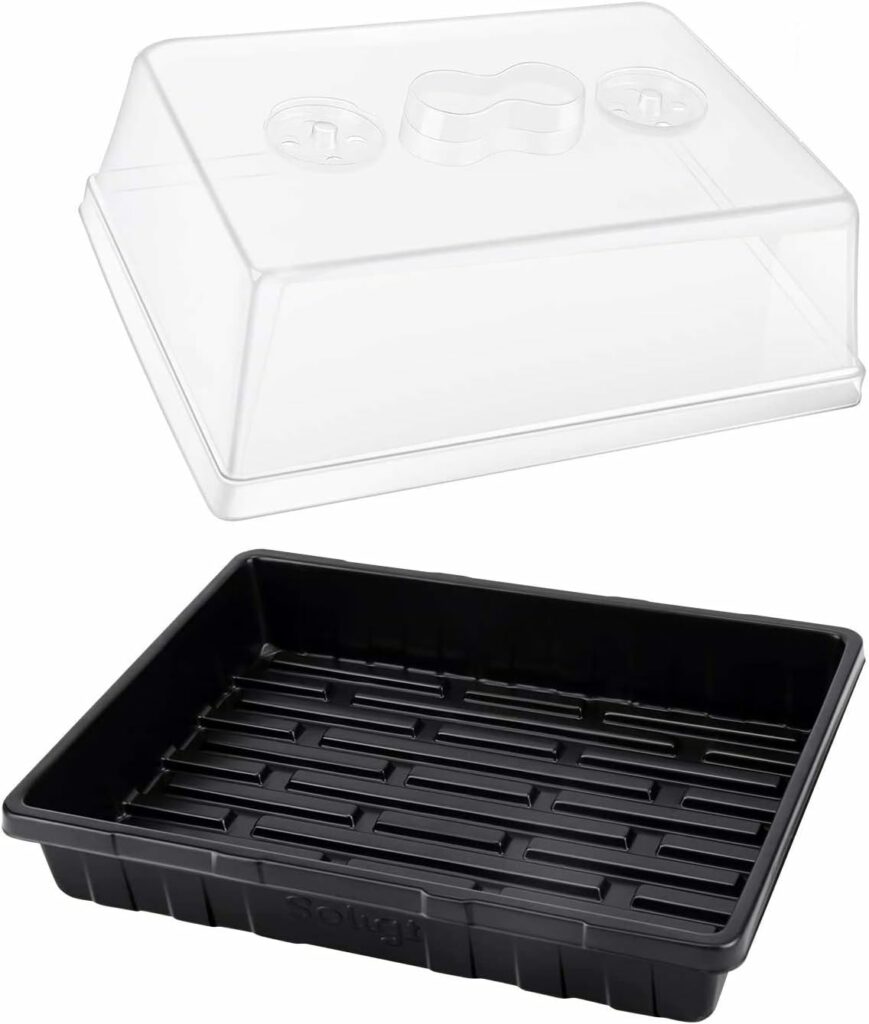
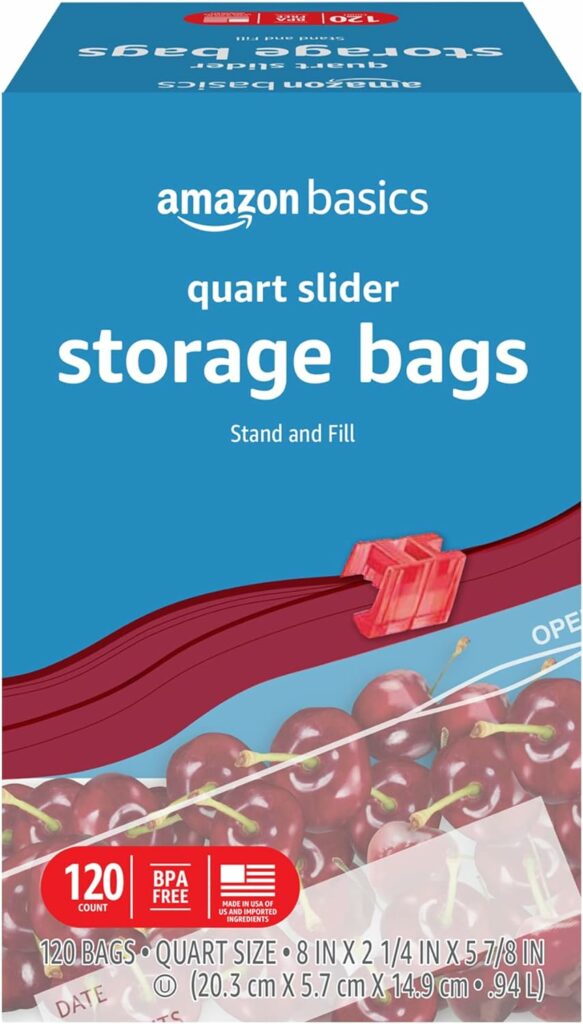
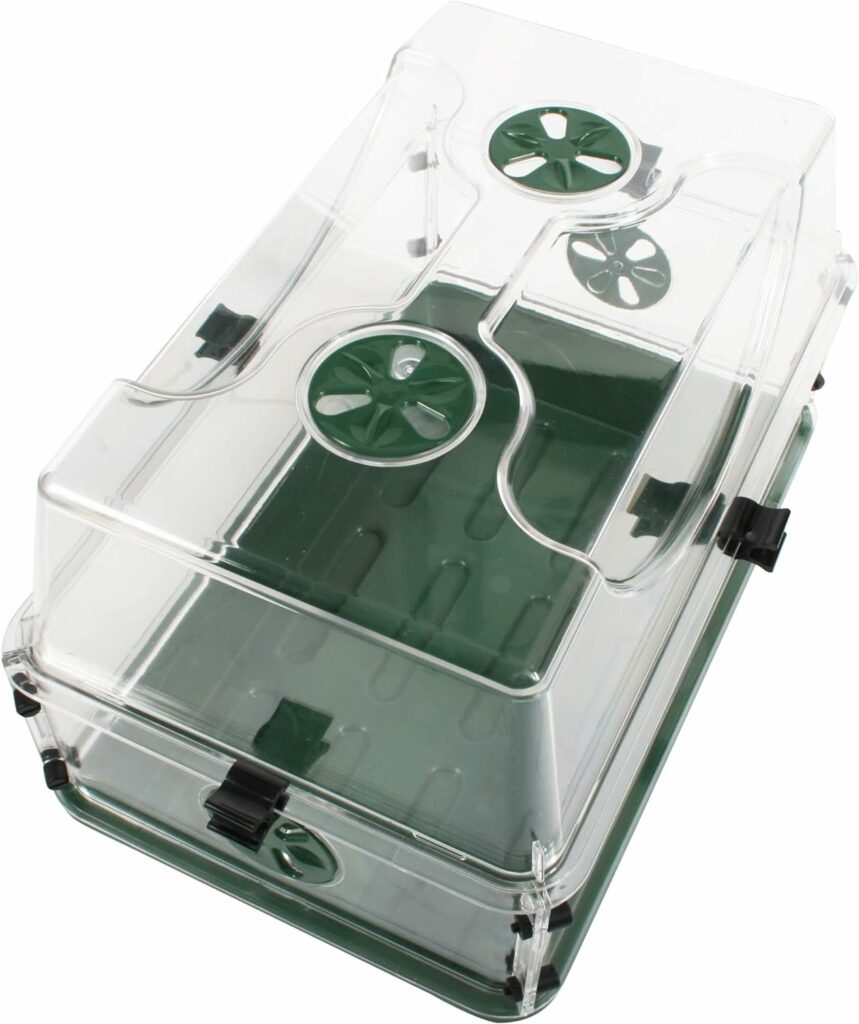
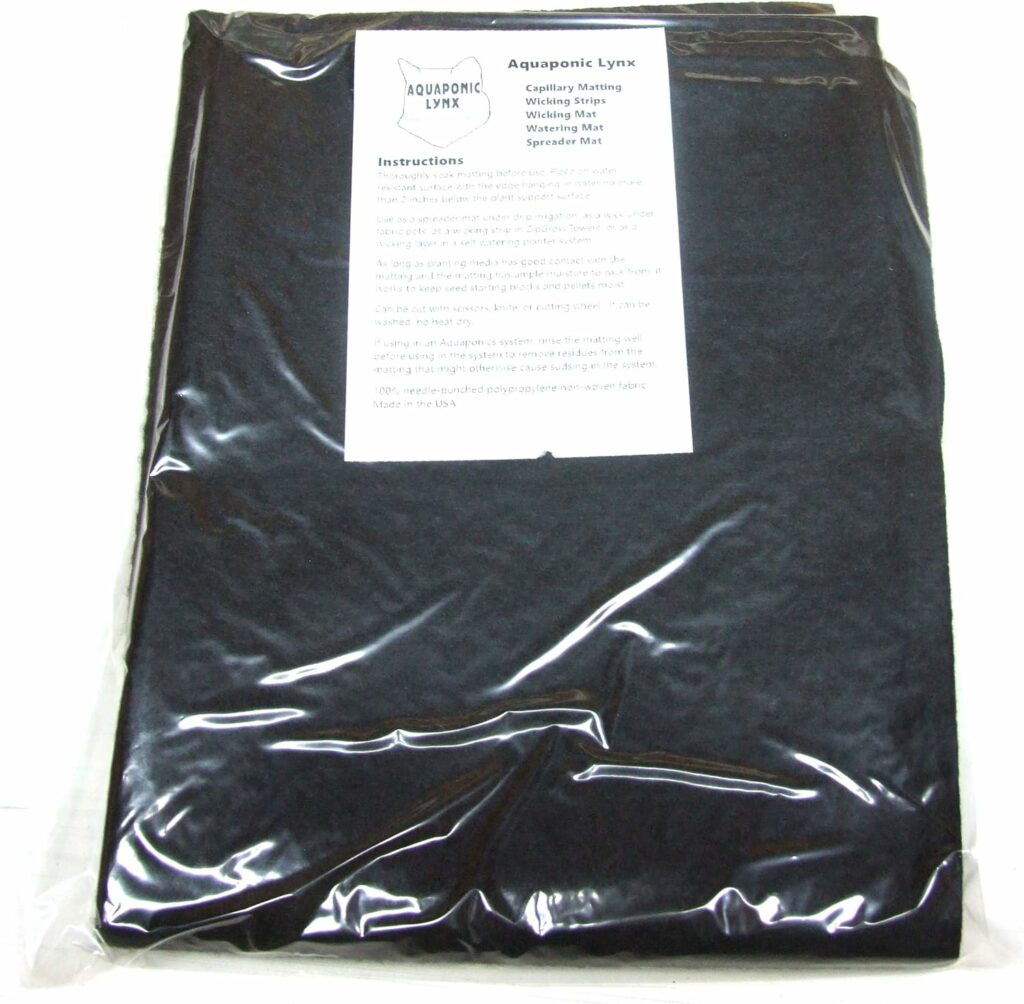
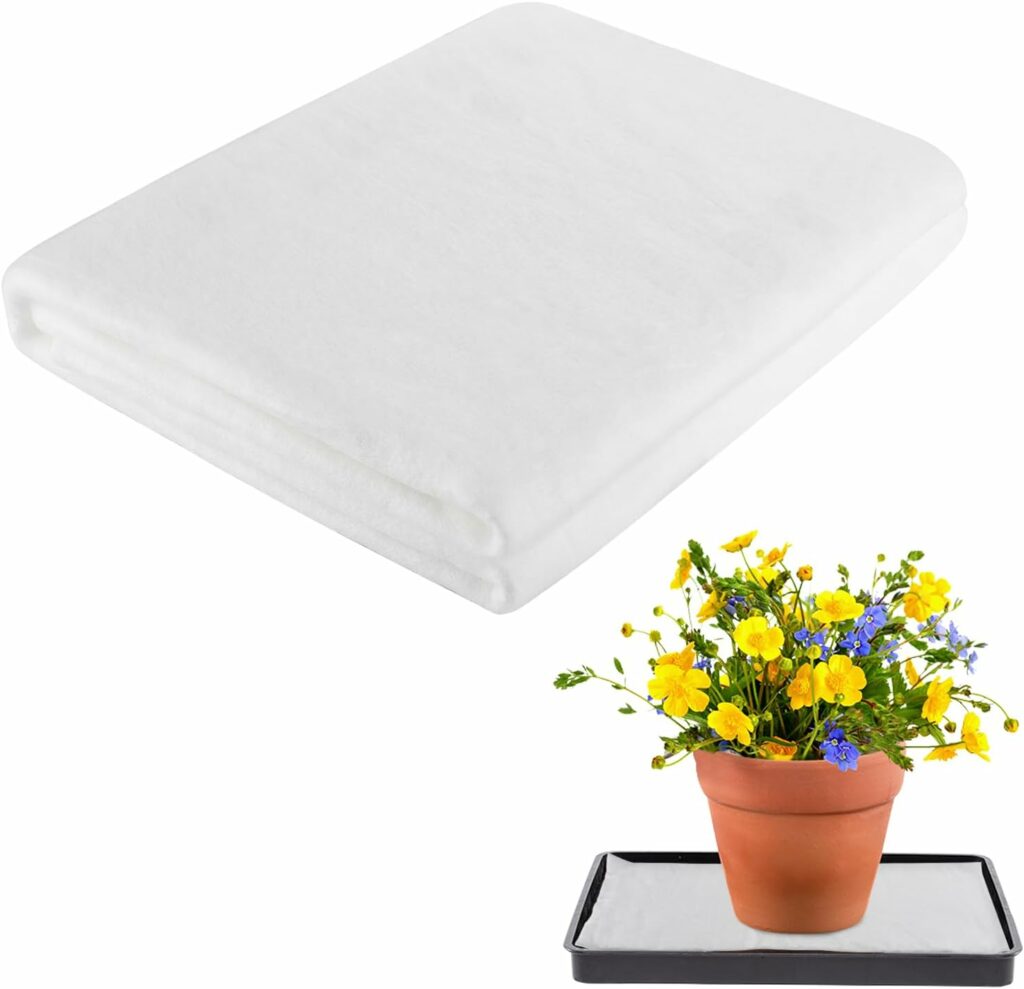
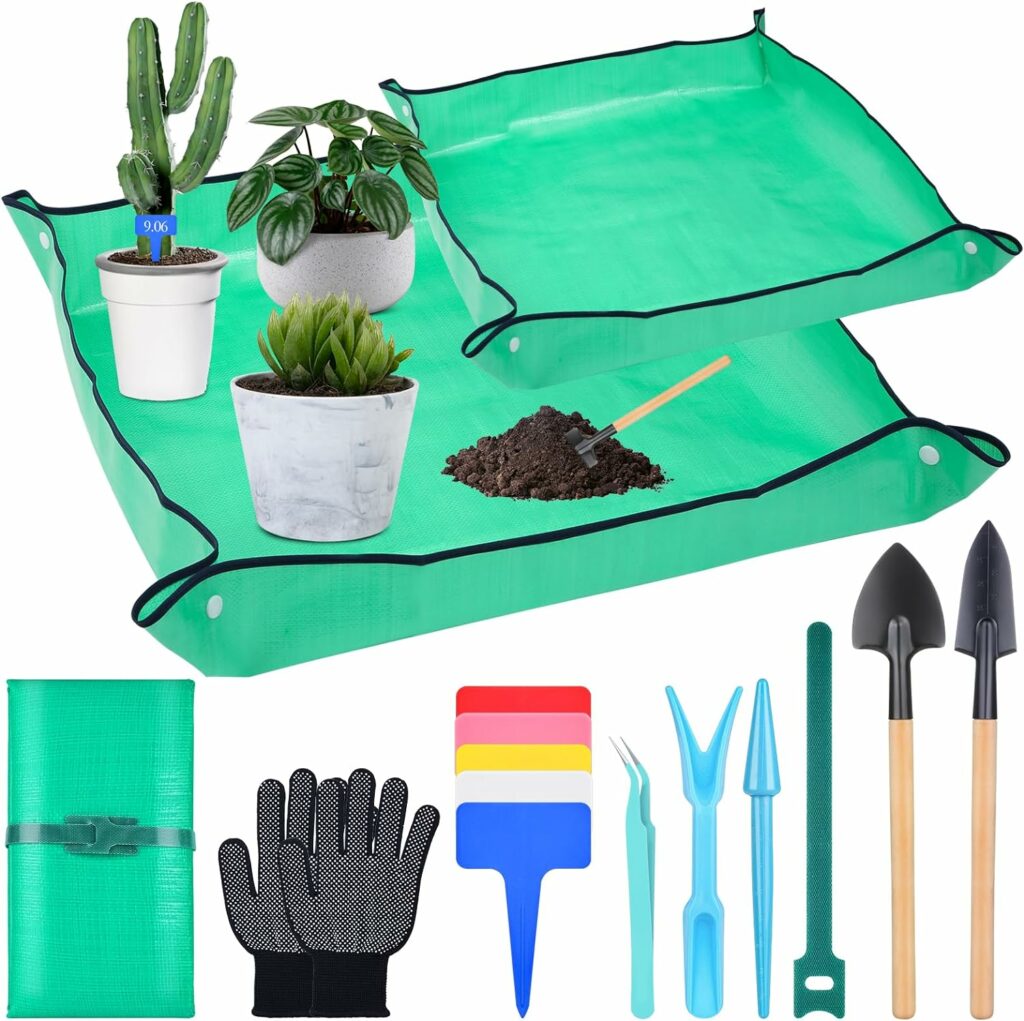
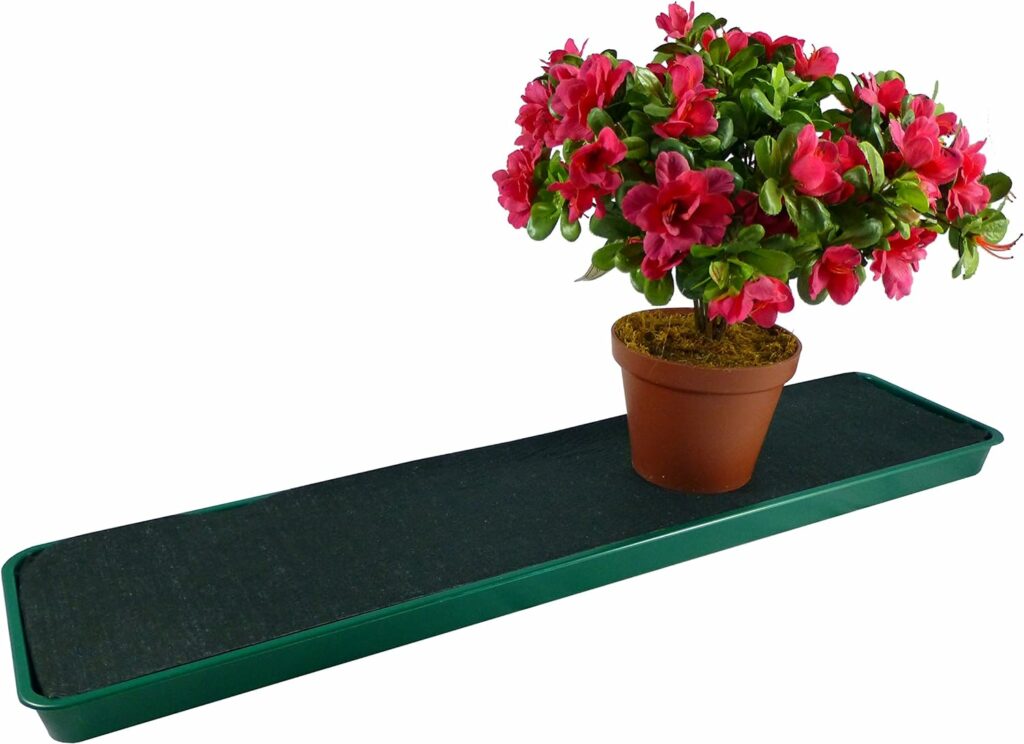
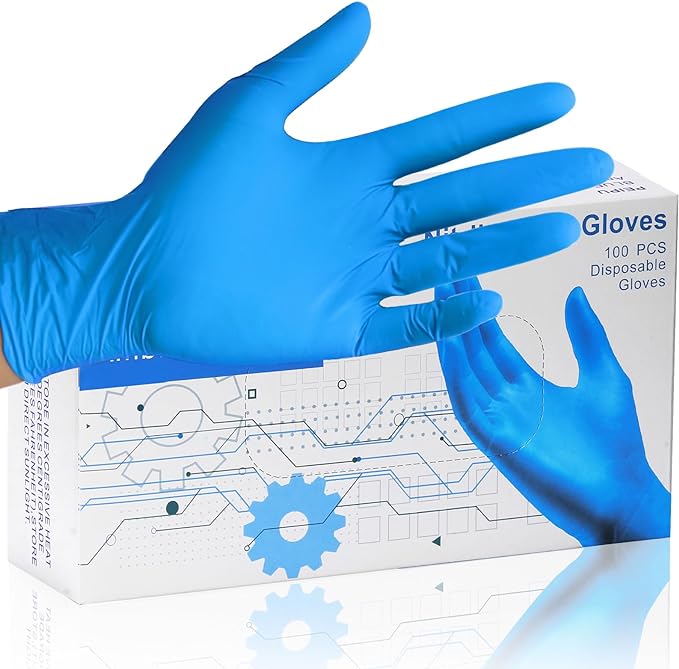

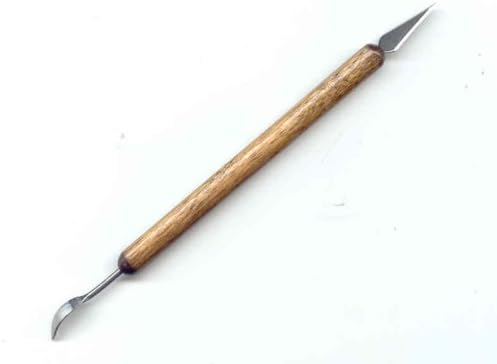
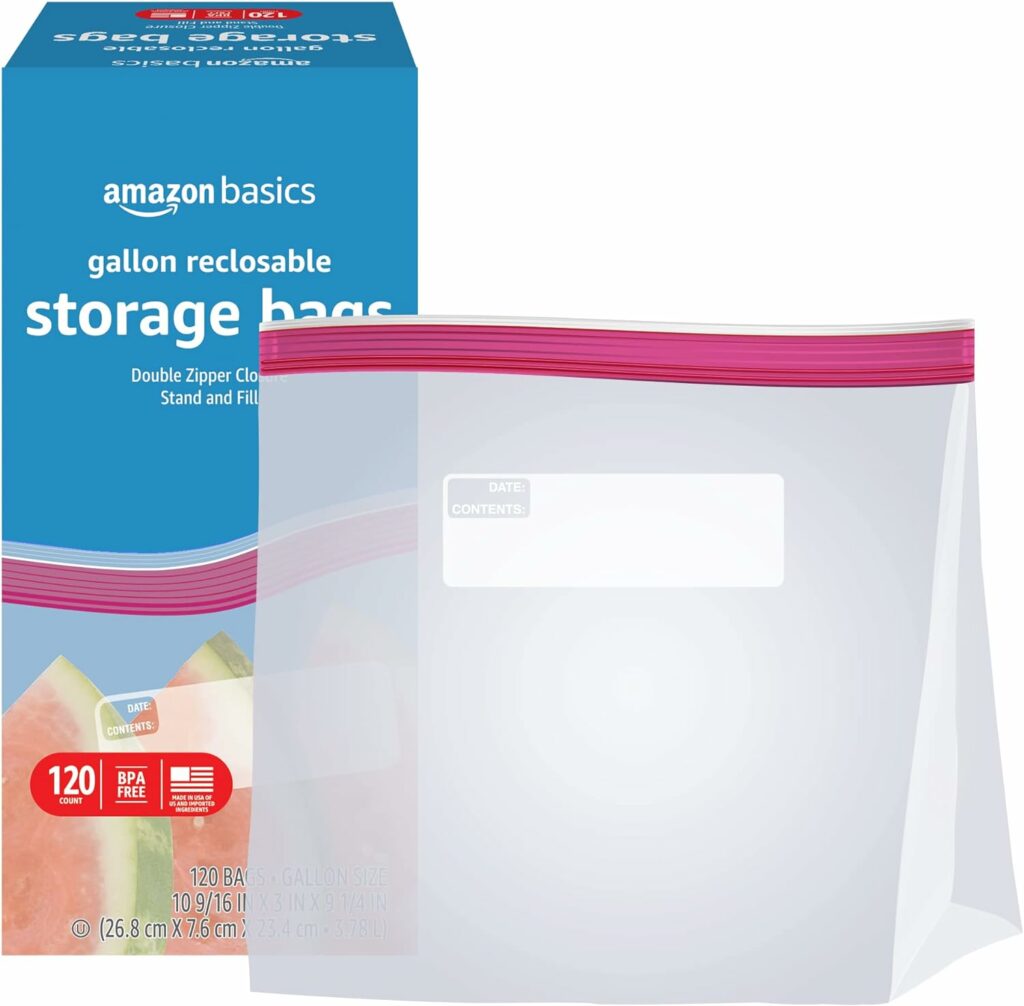
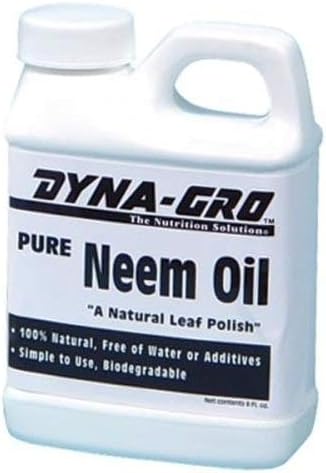
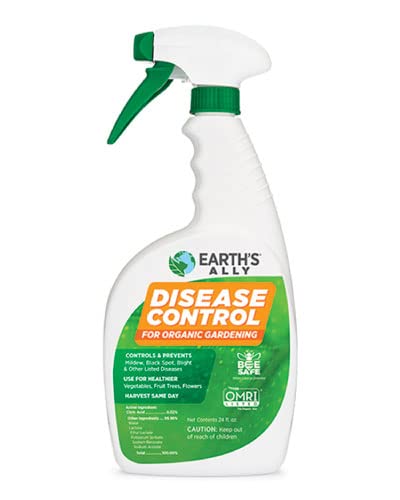
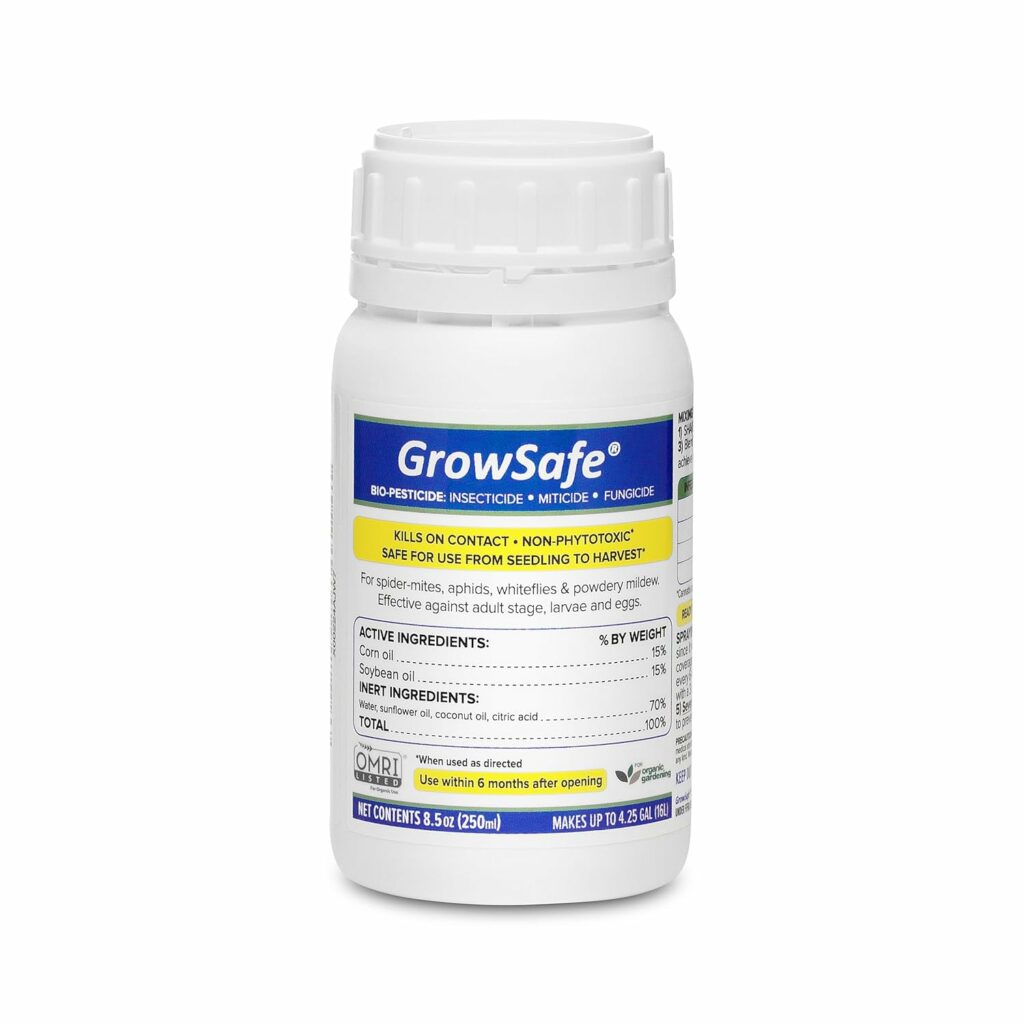
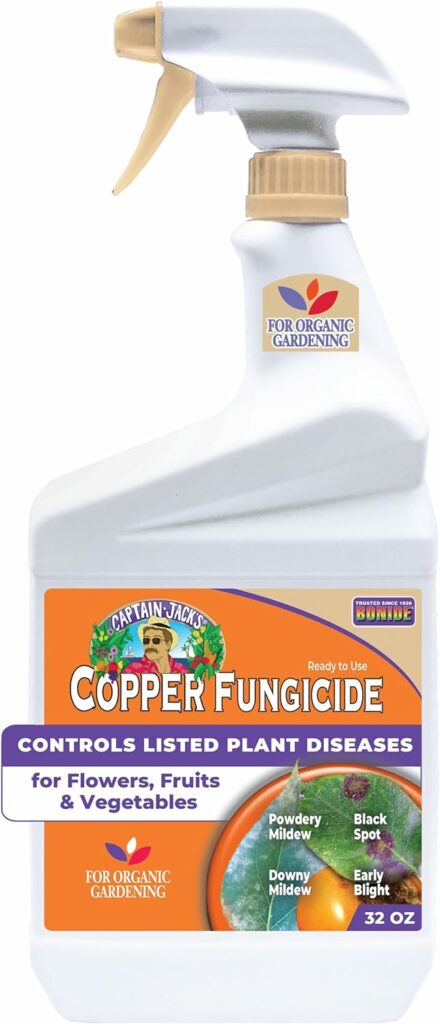
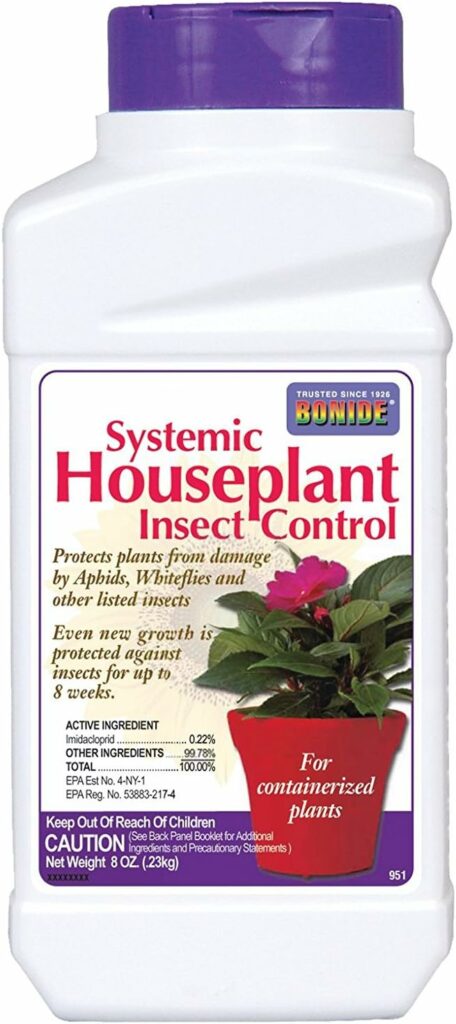
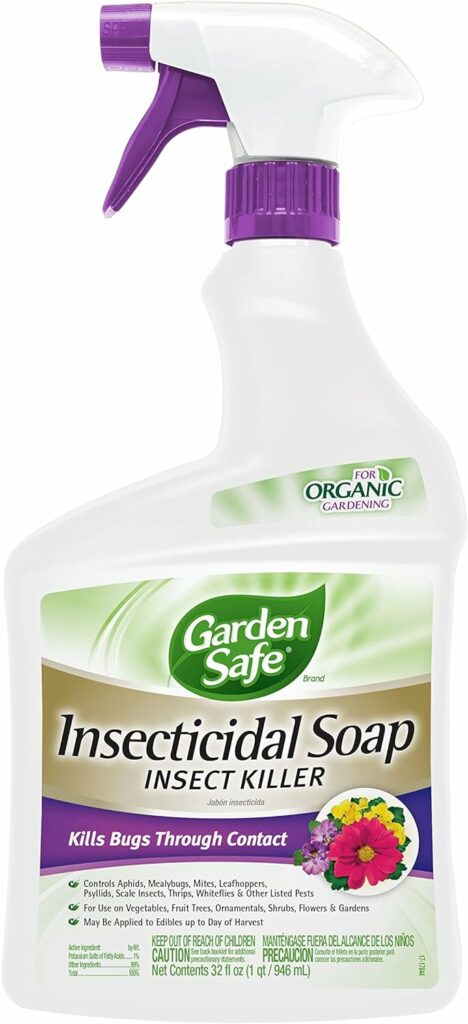
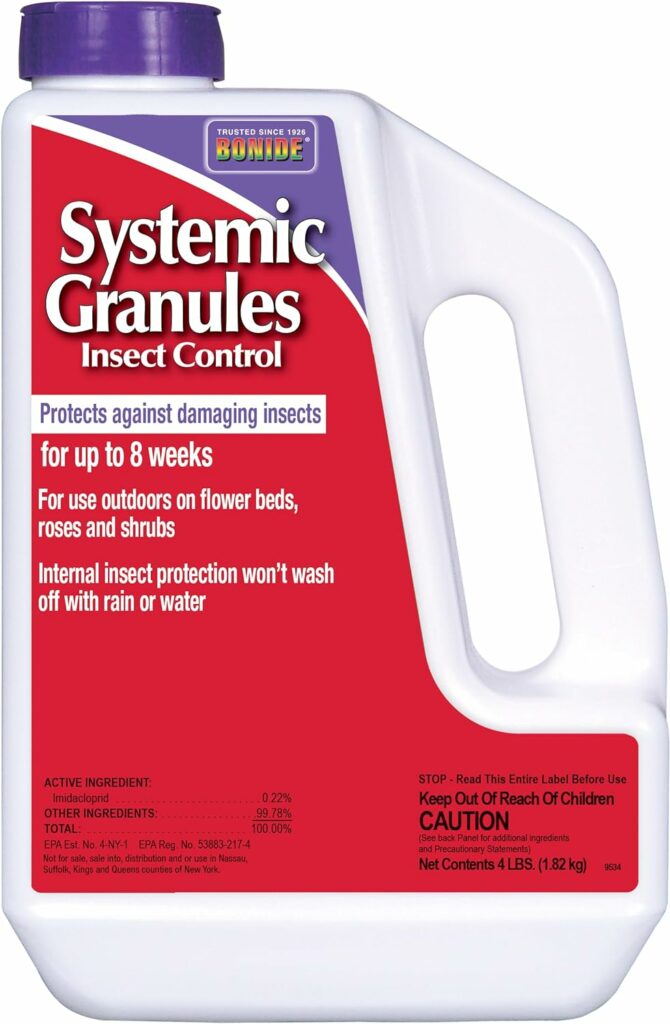
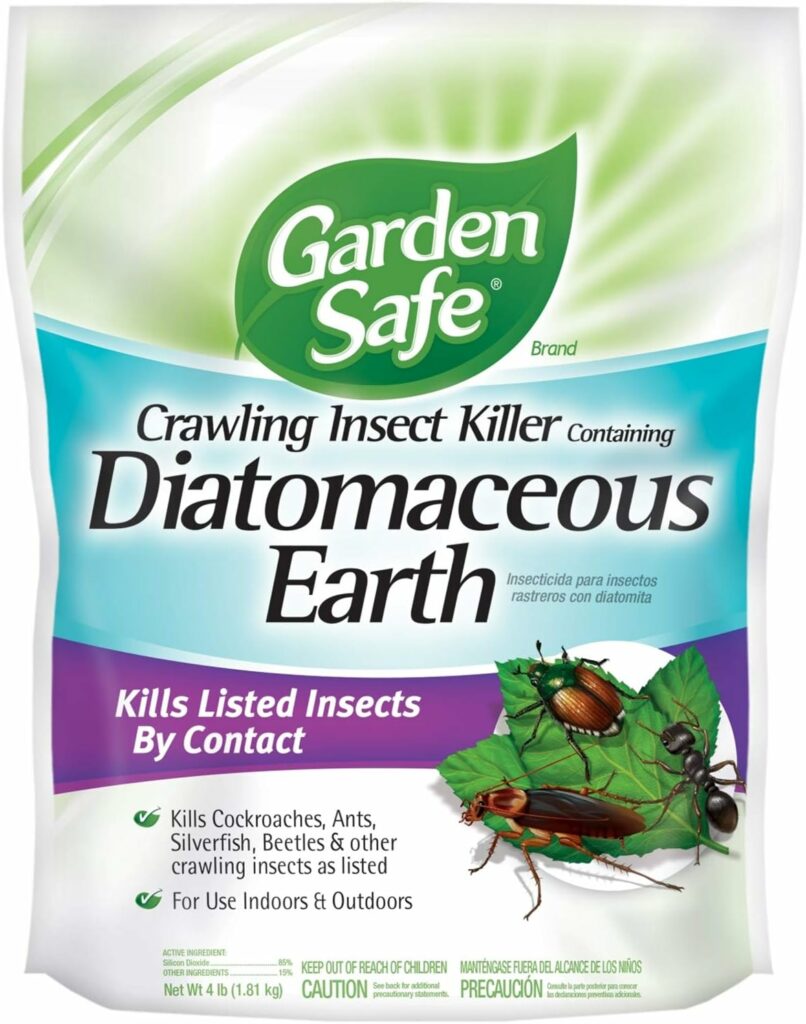
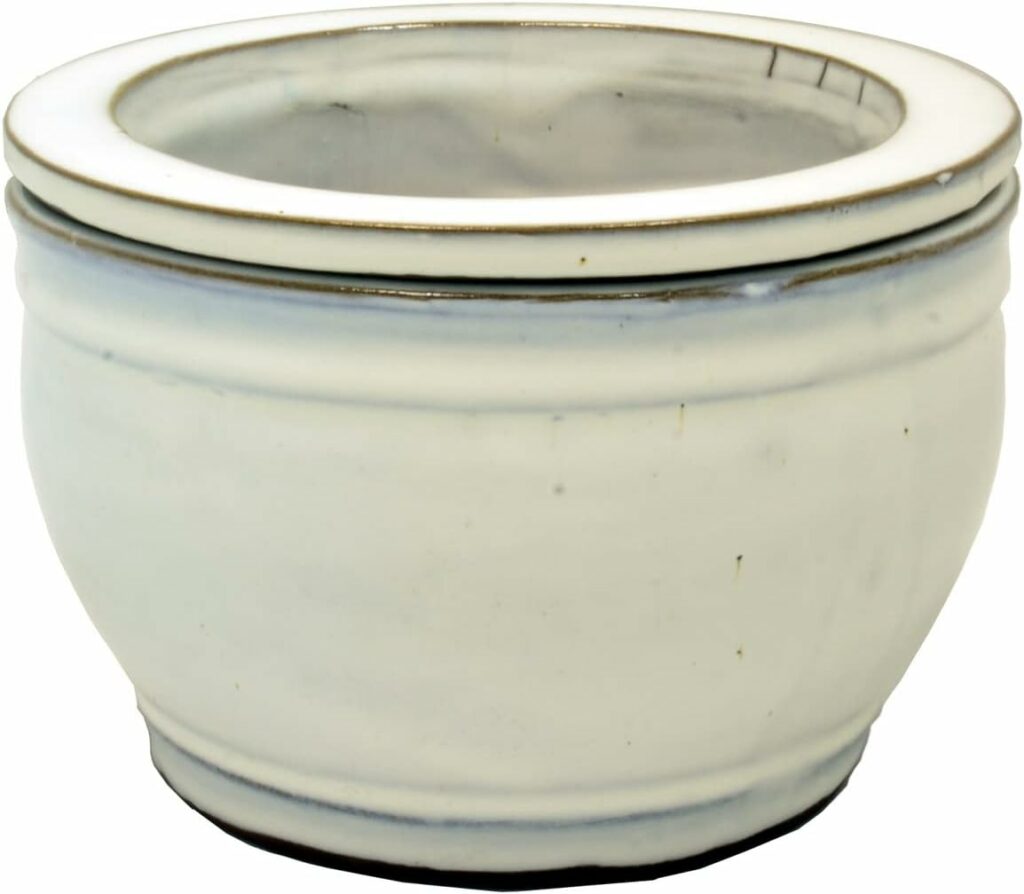
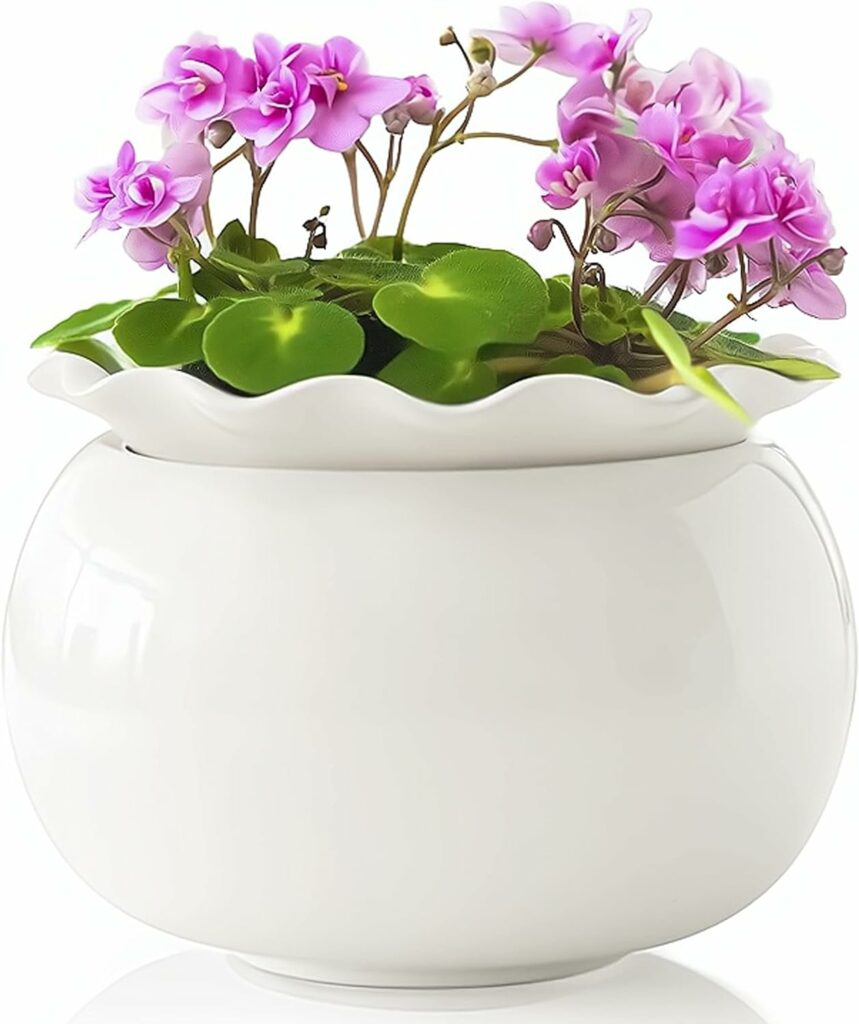
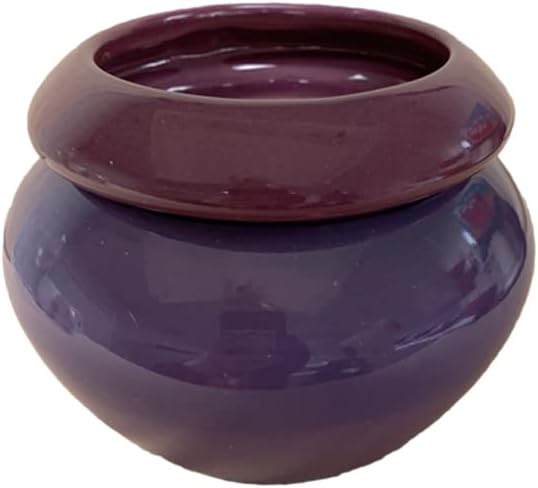
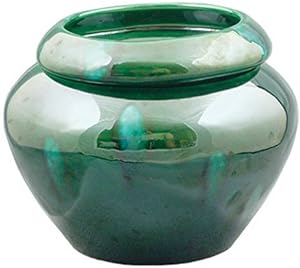
Thank-you, this is very informative and helpful. I am an inexperienced African violet lover, have gotten a few at the grocery store on clearance, and had no disease until bringing home a beautiful new colored variety from an expensive nursery. Soon all my lovely violets were covered in tiny aphid-looking bugs on their flowers, and had powdery mildew in the leaf crowns! I’ve been fighting both for 3 years trying to organically treat and salvage my pretty violets. Wish I had known to quarantine the new one! I do now, appreciate your detailed information on caring for these fussy little beauties. I’ve got lots of work ahead if I’m going to get my 6 plants healthy again! Wish I didn’t love them so much. Very high maintenance hobby! But thanks again for your help.
Hello Mariyln,
Thank you for your kind words, appreciate it!
regards,
BV
Can you mix systemic granules into your potting soil? I saw a woman on u tube making her own African Violet soil. She added several things like ground molasses and systemic granules to prevent insects. Your thought. I prefer prevention rather than a cure. Thanks.
Hello Cheryl,
thank you for your question. Yes, you can mix systemic granules in my potting soil. For the most past if you are practicing isolation of plants and your violets are in a separate room from other plants, you may not need to add the granules. Systemics can help with most bugs, not all. Neem oil is also a systemic and is less toxic, similar to this one, https://amzn.to/2J3EgjA , compared to the bonide systemic granules, found here https://amzn.to/2TnctAs. I personally do not add the granules. I have treated for powdery mildew with neem oil and it has worked well. Many growers, who have a large collection, do add systemics, as it would be a lot of work to replace those plants. If that is your case, then yes you can give it a try. But, for a smaller collection, I would not recommend systemics. Hope this helps,
regards,
BV
Can I use Isopropyl alcohol instead of 70% ethanol to disinfect?
Hello Shauna,
thank you for your question. Yes, you can use isopropyl alcohol instead of 70% ethanol to disinfect.
BV
All I did was receive a gift in the mail of an African Violet. Chosen Im told because it wouldn’t kill my cat as some of the herbs I want to grow would. So instead, by opening the mail I have brought a blight down on my house and possibly the world (as if covid hasn’t been enough) ….unless I quarantine the evil plant, suffocating it for at least 3 mo in a closed baggie. What could live thru that? But wait! 1st I must surgically remove all flowers and new growth with surgical tools & gloves treated by what sounds like a Covid/hand gel on a extra table I don’t happen to have either. All I did was open the mail. I thought it was pretty. I went online to see how to care for it and found I had unleashed Armageddon and that it would take money and lots of devoted time to stop it. Talk about overwhelmed! Apparently one must be devoted solely to African Violets to dare try to grow one in their house. I don’t know what Im going to do. Ive never before thrown a live plant away before.
Hello Cheri,
thank you for your comment. Yes, it may seem daunting at first. However, once the plant settles down in your home, it requires only routine grooming, watering and fertilizer, just like any other living plant. Placing the plant in a ziploc bag, can do wonders for a violet, after it has been repotted into fresh soil. The extra humidity and condensation of water for 1-2 months, can accelerate root growth and leaf growth too. Yes, it will survive, enclosed in a bag. The beginning precautions are to prevent any bugs entering your prize winning violets, or your expensive violets. Some growers, spend years growing a perfect plant, so precautions are necessary. However, if you are a hobby grower and have just a few plants, then basic care if just fine. Regarding, the table, its ok if you dont have an extra one. You can use your kitchen counter top or dining table, place a few newspapers on them and then use that as your work area. An outside deck or covered porch is also fine too. I hope you do not get rid of your violet. At least give it a try, before assuming all is lost. Once violets settle in, they can stay alive for years and produce very pretty blooms. Hope this helps, regards, BV
This will probably sound stupid but…when I purchase plants online including my beloved AVs , every plant arrives in a container to house plant. In the plants actual pot is plastic like bag surrounding each plant. Are they to be removed ? Poke drain hole into bottoms, remove all plastic from every plant bc it may hold water or bugs. My 1 little Violet arrived and zi put it out with a mum. Then I found your site instructing plastic bag for Quarantine 4+ months, all alone. Seems sad. Now * know why my green thumb turned into a plant killer, I brought home several AVs from a local home supply store and after a few days zi realized they were covered in white bugs, spiders and flies. I treated all 25 different plants with NEEM oil spray but only a few times.
BTW, a gardener said thrips won’t come imside and they don’t bite flesh. Oh yes they do. Agricultural schools state they want greenery but will bite humans. And there are many different species, too.
Where can I purchase quality soil for succulents? Like my grossly overgrown Aloe Vera plant I will decide and repot. Can zi use African Violet soil or something specific? Do you recommend only soil sold on Amazon, they all have bad reviews-bugs, mold in the bag. I can’t find any truly decent soil online. Poor Violet all alone in a plastic bag. I saw no sign of insect activity but will heed your word. I hope my new Orchid Plants and Gardenia plants rent infested and or won’t require plastic bag solitary confinement.
Hello Holly, yes you can use the African Violet mix, just make sure it has equal amounts of perlite or vermiculite added to it. If the soil contains too much peat, the soil will be too dense for succulents. You can also use miracle gro and add perlite to it, this will make the mix more light. Hope this help, BV
Hello, yes when you receive the plant, it is in a plastic like bag, that needs to be removed. That plastic is just for packaging purposes. The 4 month quarantine is recommended if you have a huge collection of plants (100+). If you have only a few plants, you can quarantine for 2-3 weeks inside the baggie, just check for bugs, if fine then open up bag, leave for another 2-3 weeks. Then you can remove from the bag and re-pot into fresh soil. Hope this help, BV